Samsung QN70F is quite a decent television from the mid-range segment. Its strongest point is definitely the smoothness of the picture – thanks to the 144 Hz panel, low input lag, and a plethora of gaming features, we have here a recipe for an almost perfect gaming screen. It also performs well for sports fans – the picture is fast, clear, and there are no tears. In terms of picture quality – it’s really not bad at all. The VA panel provides good blacks, brightness is above average, and colours look great after calibration. Samsung advertises the QN70F as Neo QLED, meaning Mini LED, and in a sense, you can view it that way – but only partially. The backlighting is edge-lit, so it is far from being a full-fledged Mini LED with local dimming. It’s a shame, as marketing has its influence, and the user may feel somewhat misled. Additionally, there are minor shortcomings – no USB recording, no DTS support. But despite everything, the QN70F leaves a really good impression. It may not be a “true” Mini LED, but for its price, it is a solid piece of television – especially for gamers and those who enjoy fast, dynamic content.
- Matching (Score)
- Our verdict
- TV appearance
- Where to buy
- Contrast and black detail
- HDR effect quality
- Factory color reproduction
- Color reproduction after calibration
- Smoothness of tonal transitions
- Image scaling and smoothness of tonal transitions
- Blur and motion smoothness
- Console compatibility and gaming features
- Input lag
- Compatibility with PC
- Viewing angles
- Daytime performance
- Panel details
- TV features
- Apps
- Playing files from USB
- Sound
Samsung Neo QLED QN70F / QN74F / QN77F vs Panasonic W85
Direct comparison
Check the best price offer:
Samsung Neo QLED QN70F / QN74F / QN77FQN70F / QN74F / QN77F
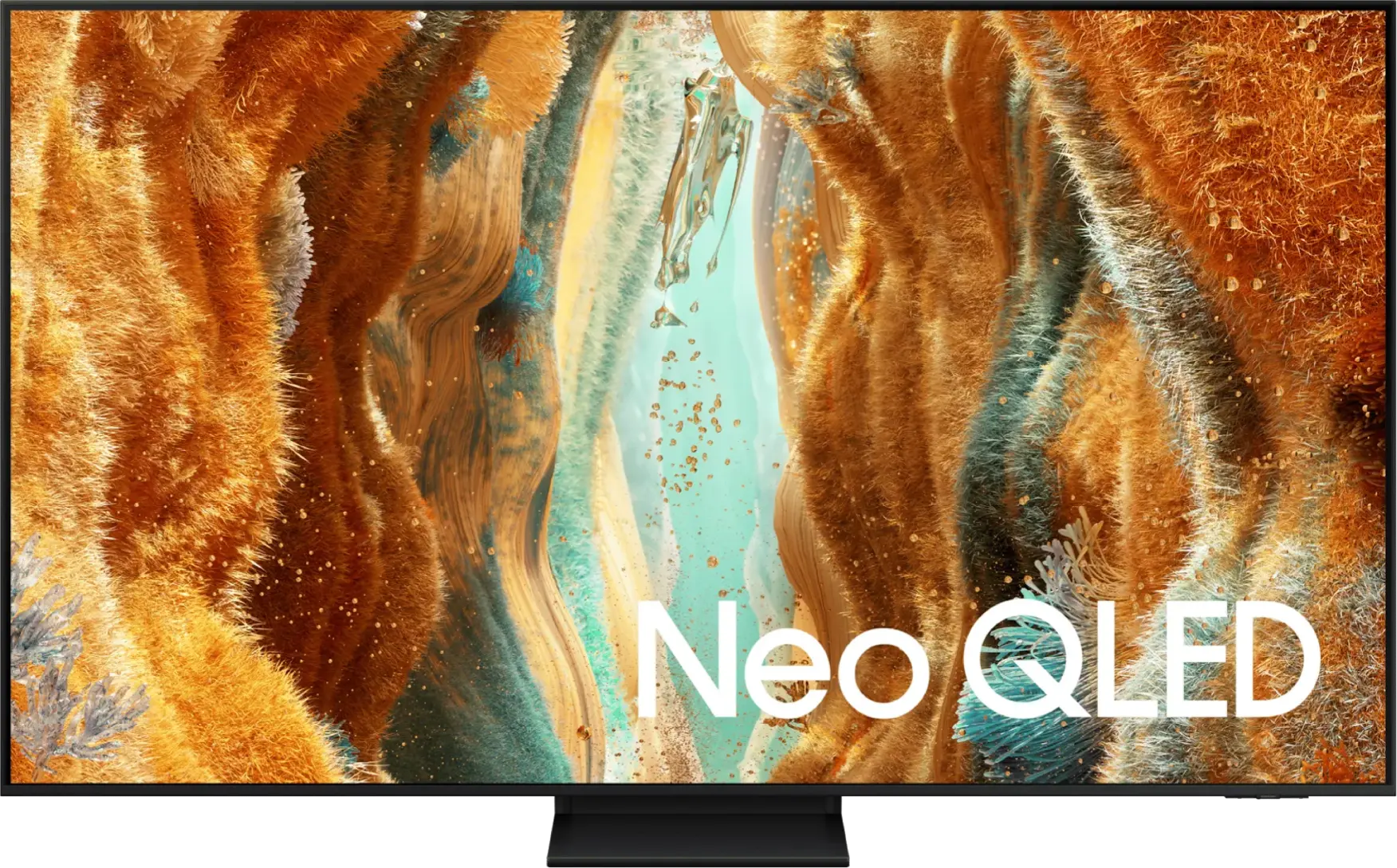
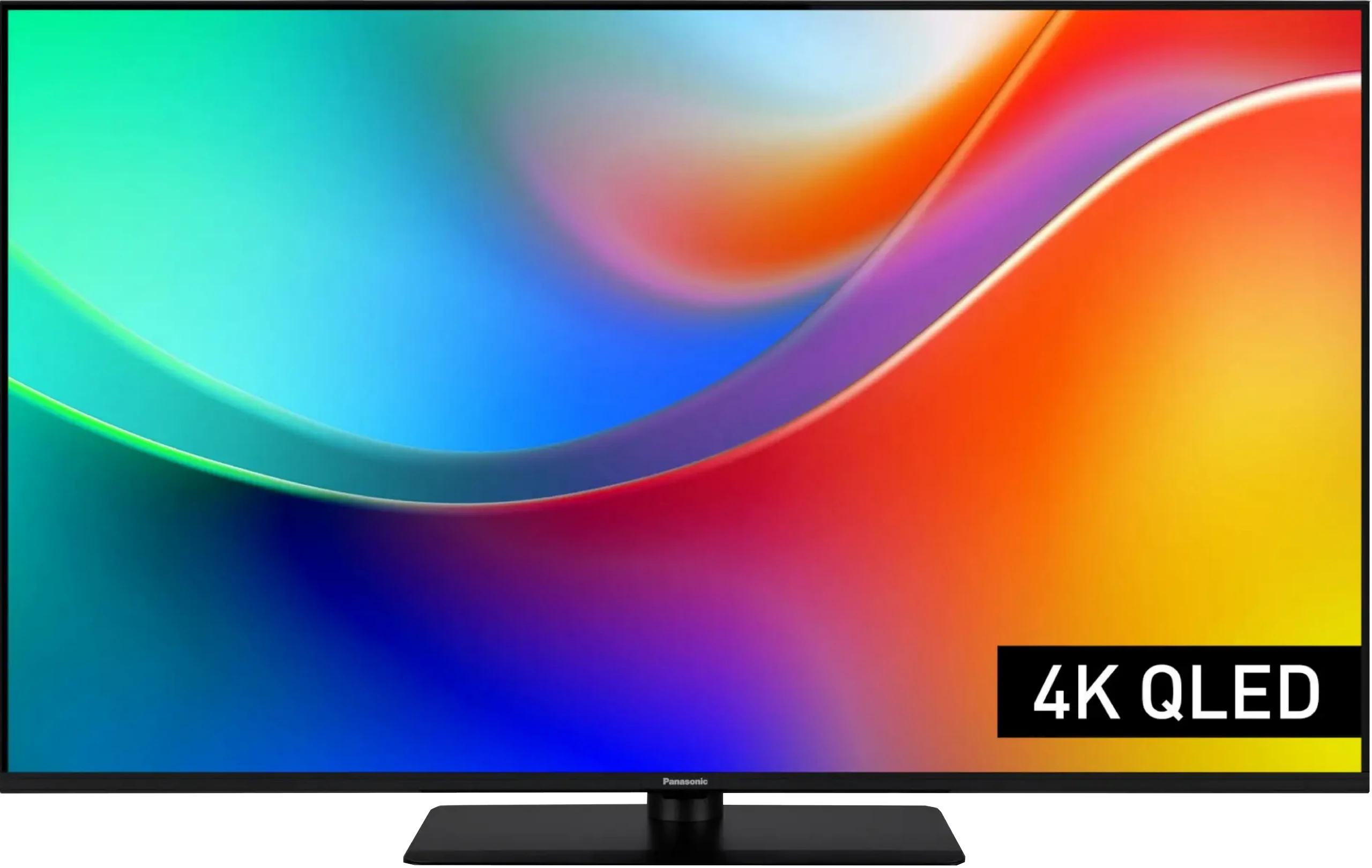
Panel type: LCD VA
Resolution: 3840x2160
System: Tizen
Model year: 2025
Complete the survey to find out the result

Panel type: LCD VA
Resolution: 3840x2160
System: Amazon FireTV
Model year: 2025
Complete the survey to find out the result

Overall rating
7.1
6.1
Movies and series in UHD quality
6.7
5.5
Classic TV, YouTube
6.6
5.8
Sports broadcasts (TV and apps)
6.7
5.8
Gaming on console
8.5
7.7
TV as a computer monitor
8.2
8.6
Watching in bright light
6.3
4.2
Utility functions
7.2
6.8
Apps
8.7
7.6
Sound quality
6.4
5.8
Complete the survey to find out what fits your preferences
Advantages
Nice black and contrast
Above average panel brightness
High refresh rate of 144Hz
Many features for gamers: ALLM, VRR, Game Bar etc.
Low input lag
4 HDMI 2.1 ports
Advanced and smooth Tizen operating system
Super slim design
VA matrix with high native contrast
High refresh rate of 120/144 Hz
Two HDMI 2.1 ports with support for ALLM, VRR, and Dolby Vision in games
Very low input lag
Fairly good colour gamut coverage thanks to the QLED filter
Support for multiple HDR formats including Dolby Vision and HDR10+
Sturdy central stand
Great compatibility with PC – full chroma 4:4:4, clear fonts
Disadvantages
No USB recording feature
No DTS format
Issues with the HGIG function (for gamers)
Symbolic local dimming (Is this really MINI-LED?)
Low brightness (below 270 nits) – no real HDR
HDR mode in games is poorly developed, with incorrect HGiG implementation
Poor media file player
The FireTV system in Europe is poorly developed: there are micro stutters and awkward translations, and many applications are missing
Average sound quality, lacking depth
The motion smoother does not want to work
Our verdict
The Panasonic W85B is a television that aims to prove that the Japanese brand can make not only high-end equipment but also something more "for the people." And indeed — on paper, it looks quite decent: a VA panel with solid contrast, high refresh rates of 120/144 Hz, two full HDMI 2.1 ports, and low input lag. It sounds like a great set for a gamer or someone who just wants an affordable TV with good fundamentals. However, the reality is a bit more complicated. The W85B performs well mainly with the SDR format, especially after calibration, and is suitable for typical daily use. But when we start demanding more from it — for example, expecting strong HDR effects or greater immersion in games with that mode turned on — the TV quickly reveals its limitations. Its brightness is low and the lack of local dimming really stands out during evening viewing. Therefore, we see the W85B more as a "daily" television — ideal for someone who watches terrestrial television, YouTube, or streaming in SDR, and wants to connect a console or PC at 120/144 Hz (but without HDR). In this role, it performs very well. Is it a television for everyone? Definitely not. But if we accept its limitations and approach it without high expectations, the W85B can provide a lot of enjoyment for relatively reasonable money.
TV appearance
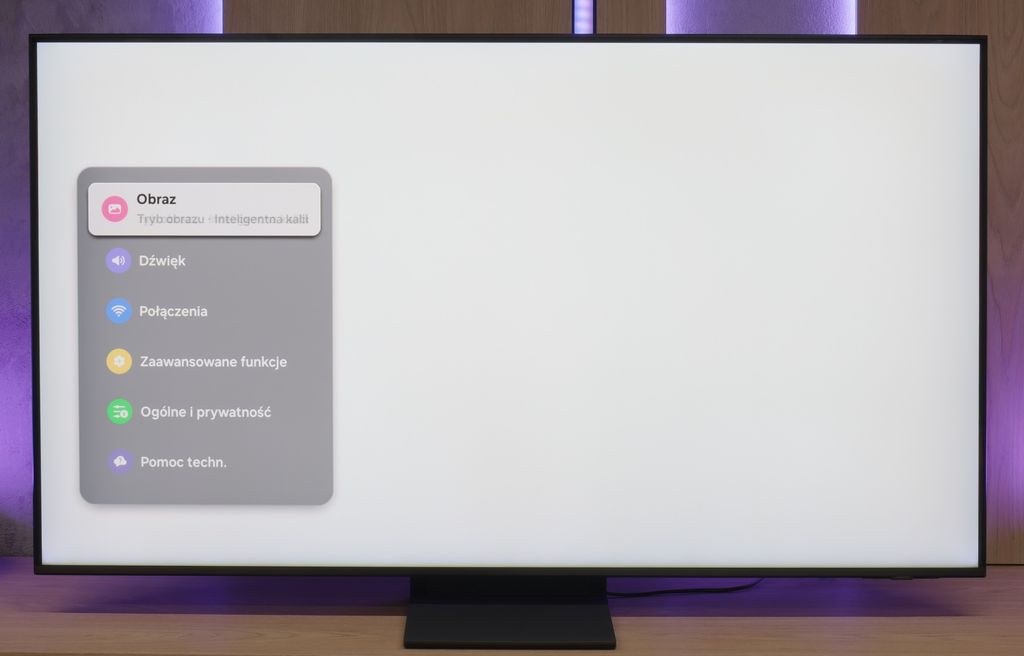
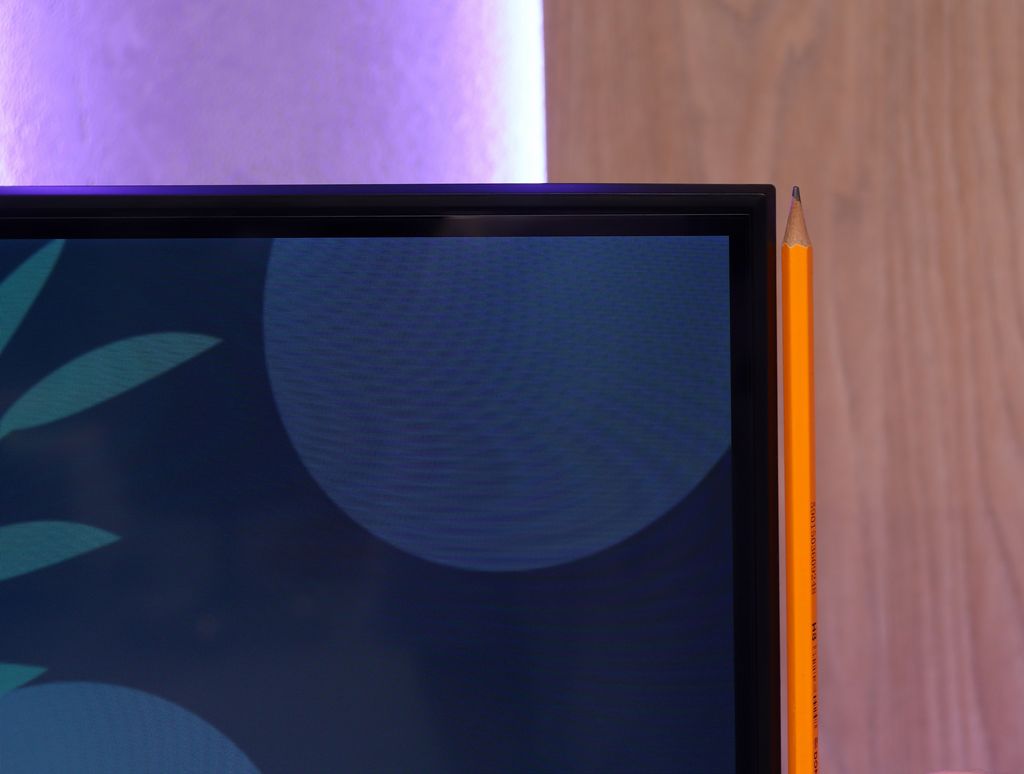
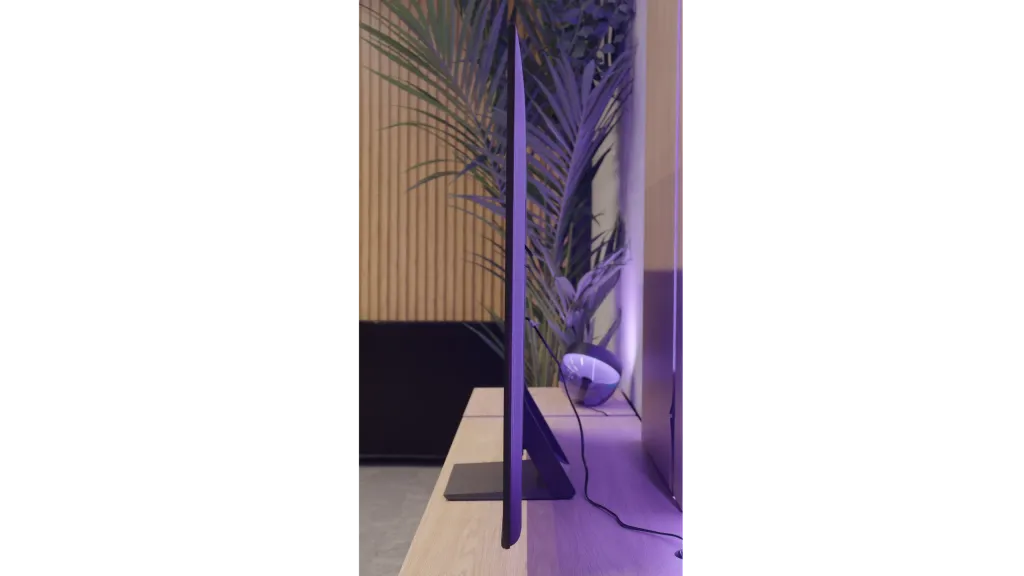
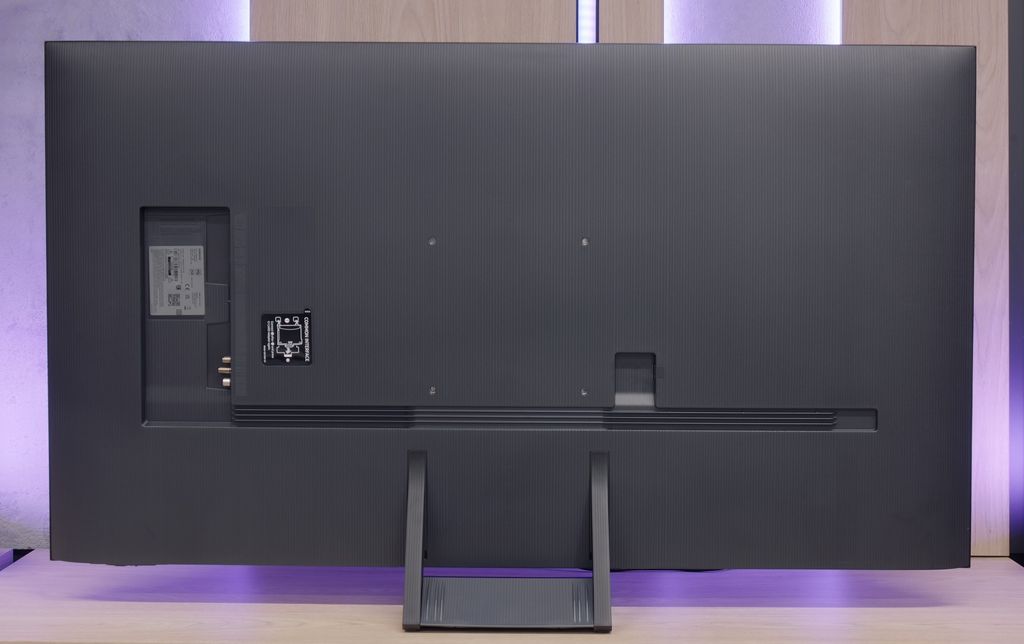
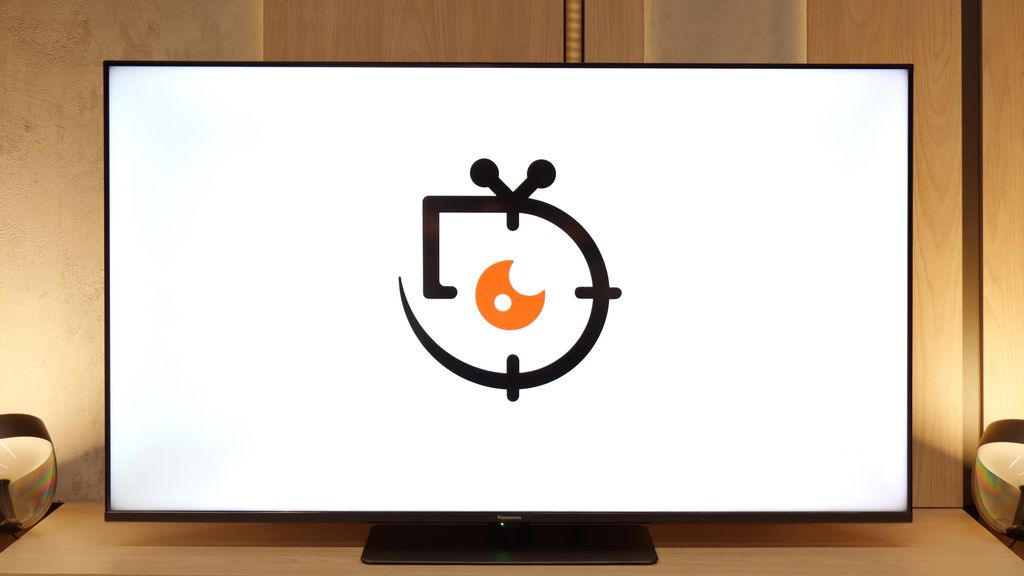
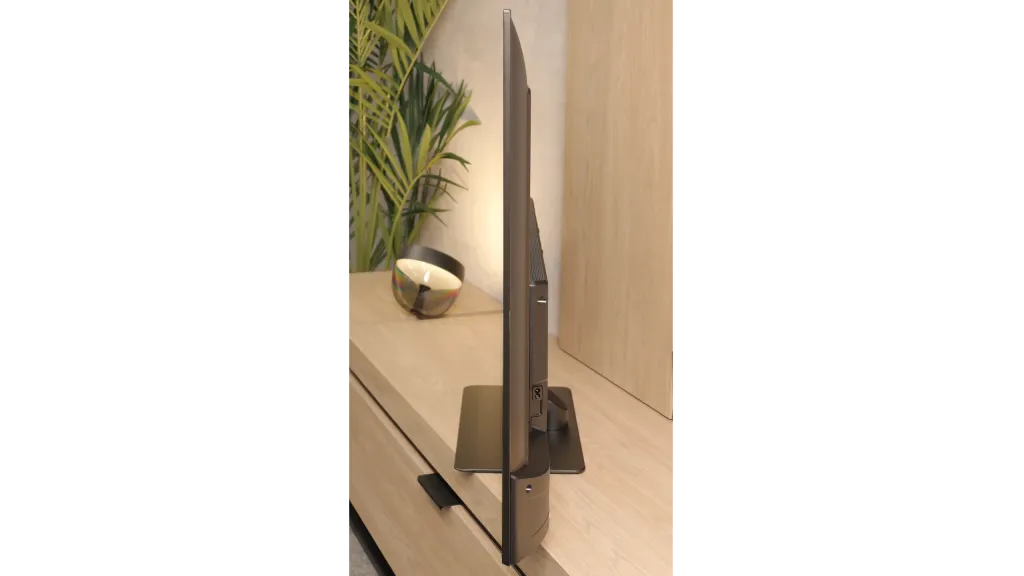
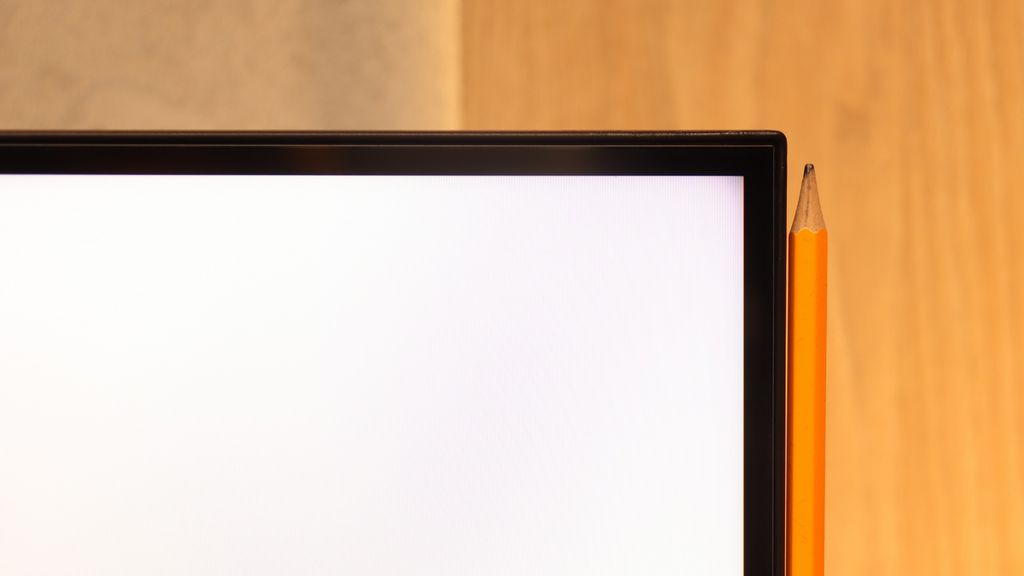
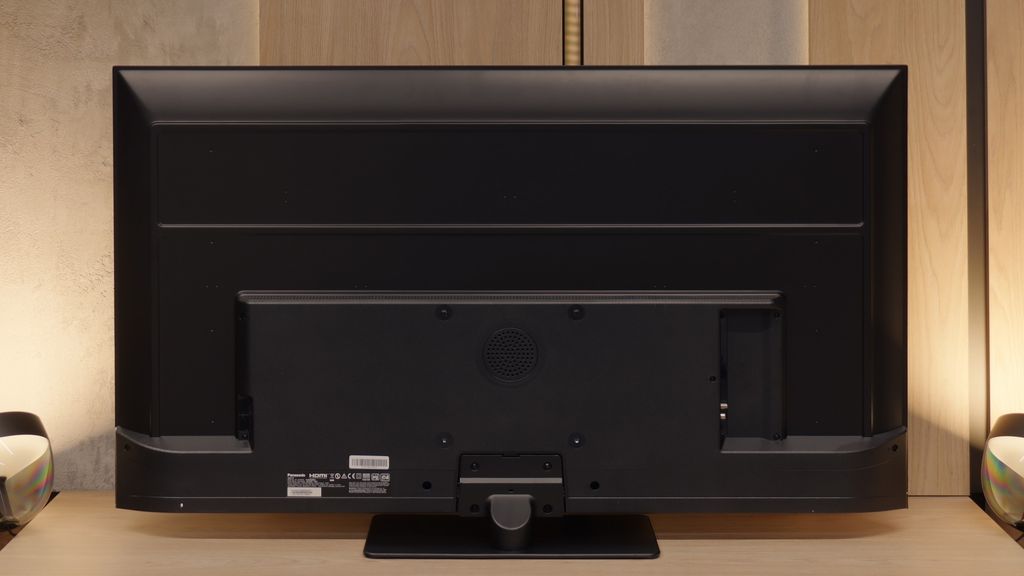
Contrast and black detail
6.2/10
5.3/10
Local dimming function: Yes, number of zones: 20 (1 x 20)
Local dimming function: No
Contrast:

Result
9,200:1

Result
7,000:1

Result
5,350:1

Result
5,700:1

Result
5,300:1

Result
4,300:1

Result
4,250:1

Result
4,200:1

Result
4,400:1

Result
3,150:1
Halo effect and black detail visibility:


The QN70F is equipped with a VA panel that offers a high native contrast – this is already a good starting point for black levels, especially during evening viewing. However, its capabilities do not theoretically end there. The television is branded as Neo QLED, which indicates the presence of Mini LED technology and a local dimming system. And indeed – the QN70F has this function. The problem is that we are not talking about classic local dimming with LEDs positioned directly behind the panel. Instead, edge lighting has been implemented with an overall dimming mechanism known as global dimming. The effect of this is that instead of selective brightness control in individual zones, the entire screen is slightly dimmed when a dark scene appears. In practice, this means that the contrast is average compared to Mini LED models that offer true local dimming. The black levels are not bad – thanks to the VA panel itself – but one cannot speak of precise light control like that provided by advanced systems with multiple zones. This raises the question: is the QN70F series really a Mini LED television, or just a marketing variation on the Q70 series? Looking at the technical aspects – it is hard to consider this model a full-fledged representative of this technology. But in everyday use, the black levels appear decent and for many people may be fully satisfactory.
The W85B is Panasonic's basic LCD, so one shouldn't expect miracles in this category, but… the VA panel does a really good job here. Its biggest advantage is simply better contrast than in popular IPS panels – there, blacks often look like grey, whereas here you can actually see deeper tones. In the scenes we tested, the contrast held around 4000:1, which translates to roughly four times better performance than in IPS. Of course, there's no local dimming, so in challenging conditions, when it gets really dark in the room, black can resemble navy more than absolute pitch black. This is exactly the difference you notice when comparing it to OLEDs or Mini-LEDs. But for everyday viewing – series, matches, films in the evening in the living room – this contrast is more than sufficient. The picture has the appropriate depth, and the W85B does not give the impression of a "faded" television.
HDR effect quality
5.6/10
4.2/10
Luminance measurements in HDR:

Result
619 nit

Result
449 nit

Result
500 nit

Result
422 nit

Result
483 nit

Result
228 nit

Result
249 nit

Result
283 nit

Result
282 nit

Result
297 nit
Scene from the movie “Pan” (about 2800 nits)


Scene from the movie “Billy Lynn” (about 1100 nits)


Static HDR10


Dynamic: HDR10+
Dynamic: Dolby Vision


HDR luminance chart:
Panasonic W85
HDR luminance
Samsung Neo QLED QN70F / QN74F / QN77F
HDR luminance
The QN70F is a television that can pleasantly surprise when it comes to brightness. In ideal testing conditions, it reaches up to 800 nits, which – for this price range – is a really solid figure. Of course, this result comes from measurement charts, so we decided to check how it performs in practice, with real films. Here, the television somewhat tempers its capabilities. In most tested scenes – for example, in "The Meg" – the actual HDR brightness hovered around 500 nits. This is still a decent result, allowing for enjoyment of HDR effects, although it is far from perfect. On the other hand, we have a QLED screen with a layer of quantum dots, which means very good colour reproduction capabilities. The colours are vibrant and saturated. The QN70F covers about 94% of the DCI-P3 colour space, and in the wider BT.2020 palette, it exceeds 75%, so in this respect, there is nothing to be ashamed of.
Unfortunately, we do not have good news here. The Panasonic W85B is rather dim – its peak brightness does not exceed 300 nits, so it’s hard to talk about any true HDR effect. In practice, this means that scenes which can “shine” and make an impression on other screens simply look like ordinary SDR with a slight boost in colours here. Our measurements and film tests confirmed this – regardless of the content, the W85B will not extract anything more from HDR. Therefore, if someone is looking for a television specifically for HDR, it is better to look towards other models. As consolation, the fact remains that in terms of colours, the W85B performs quite well. It is a QLED television, so its colour gamut coverage is wide, and most films and series look natural, without a distinct “washed-out” effect. The colours are saturated, so in everyday viewing, there is no sense that something is strongly amiss.
Factory color reproduction
7/10
4.2/10


Factory Mode
After calibration


Factory Mode
After calibration
We tested the QN70F in its best default picture mode, which is Filmmaker Mode. I must admit that in this particular test unit, the factory settings performed quite well. The image was calm, natural, and despite minor deviations – pleasant to watch. The biggest flaw was a slight dominance of red in the white balance, which caused a slight pinkish hue across the entire scene. However, this was not a glaring defect – rather subtle and only noticeable when directly compared to a properly calibrated screen. A somewhat larger issue arose in the brightness characteristic. The television tends to underestimate the brightness of parts of the image that should be displayed more brightly. As a result, some details can appear slightly muted – not so much lost completely, but not resonating as clearly as they should. Nonetheless, as far as televisions in this category and in these settings are concerned – we consider the result a good starting point for further calibration.
When testing the Panasonic W85B, we obviously started with Filmmaker mode, as this is today’s gold standard when it comes to watching content “as the director intended.” The problem is that this television is quite far from those intentions. The biggest issue turned out to be an excess of red – both in SDR and HDR. The image often appeared too warm because of this, and in some scenes, it was almost “blazing.” Additionally, there is the issue of brightness management. When we looked at the gamma or EOTF charts, it was clear as day that in most scenes, the television brightens the image more than it should. The effect was simply predictable. Details can get lost, there is flattening, and highlights are blown out across the entire screen. We know, of course, how to correct this, but it must be said honestly that it requires a lot of work during calibration. Out of the box, the W85B does not provide a picture close to reference – it is rather a television that will always interpret colours and brightness a little “in its own way” without professional adjustments. Unfortunately, this is to the viewer’s detriment.
Color reproduction after calibration
8.5/10
6.9/10




After calibration, the QN70F shows that it can offer a truly high level of colour reproduction. The white balance was nearly perfectly aligned, and the values in the Color Checker test dropped below level 3 – meaning below the threshold at which the average eye can perceive differences. The image looks natural, and the colours are faithfully rendered, without excessive saturation or the coolness known from factory settings. It must be admitted that Samsung provides very extensive calibration options – not only for enthusiasts but also for professionals. The QN70F takes advantage of this potential and, after proper adjustment, can come close to significantly more expensive models in terms of colour accuracy. The only thing that can still be nitpicked is the brightness characteristic. There is still a tendency to lighten the smallest areas of the image – particularly those that should remain darker. However, this is a design feature of this model, not a calibration error. Despite this, the final effect definitely deserves recognition.
Fortunately, calibration made a significant difference for the Panasonic W85B, particularly in SDR content. Here, the improvement was really noticeable – we managed to balance the whites and somewhat tame the tendency of the television to excessively brighten the entire image. The picture became more coherent, and the colours gained a naturalness that was lacking in the factory settings. Admittedly, the results from the Color Checker are not perfect, as the W85B has visible issues with green saturation, but overall, we evaluate the post-calibration effect in SDR very positively. The situation is a bit different with HDR. Here too, we managed to reduce the tendency to warm up the entire scene, so the image performed significantly better than in the factory settings. However, the same issue we mentioned earlier is still evident – the television interprets the image too much "on its own" and brightens the entire screen. The lack of local dimming only exacerbates this effect. In summary, briefly in SDR content, the W85B performs really well after calibration and is more than suitable for daily viewing. However, in HDR, even after adjustments, it remains difficult to unequivocally recommend it for serious viewing sessions.
Smoothness of tonal transitions
9/10
9.1/10












In terms of the fluidity of tonal transitions, the QN70F performs really well. Gradients are smooth, and colours blend into each other without obvious thresholds or banding. Even in more difficult movie scenes – particularly those that are very dark – any possible imperfections are minimal and you really have to make an effort to notice them. In regular viewing, most users should not encounter any issues with colour merging. The image looks clean and coherent, without artificial smoothing or distortions. This is another aspect in which the QN70F pleasantly surprises.
Here we can comfortably praise the Panasonic W85B. The television handles colour matching and tonal transitions remarkably well. Gradients appear smooth, without visible bands or artificial contours. As a result, the image gains a natural quality, and sequences with a large number of subtle shades – such as the sky or blurred backgrounds – look exceptionally good for this class of equipment.
Image scaling and smoothness of tonal transitions
6.9/10
6/10
Smooth transition function
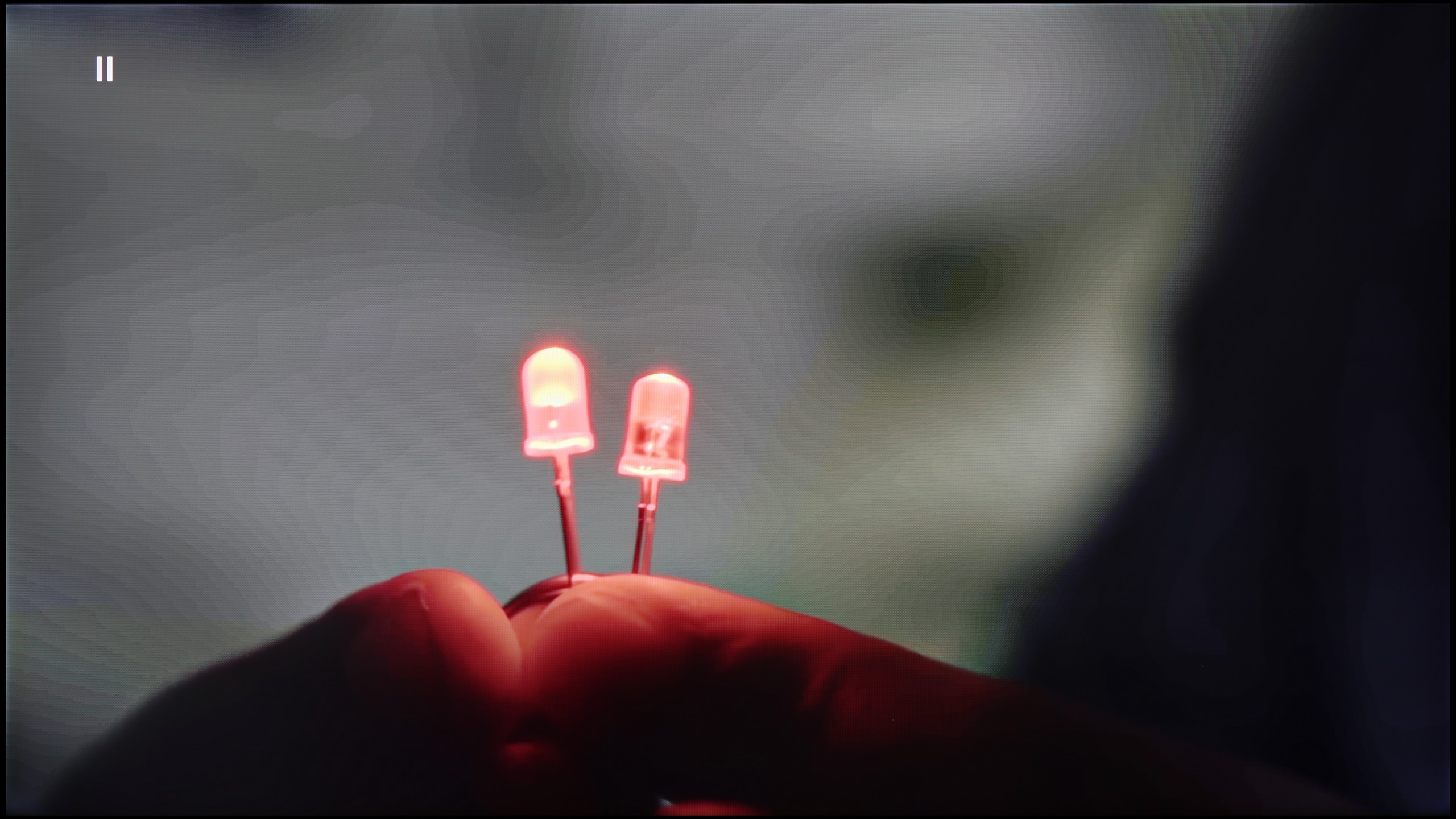
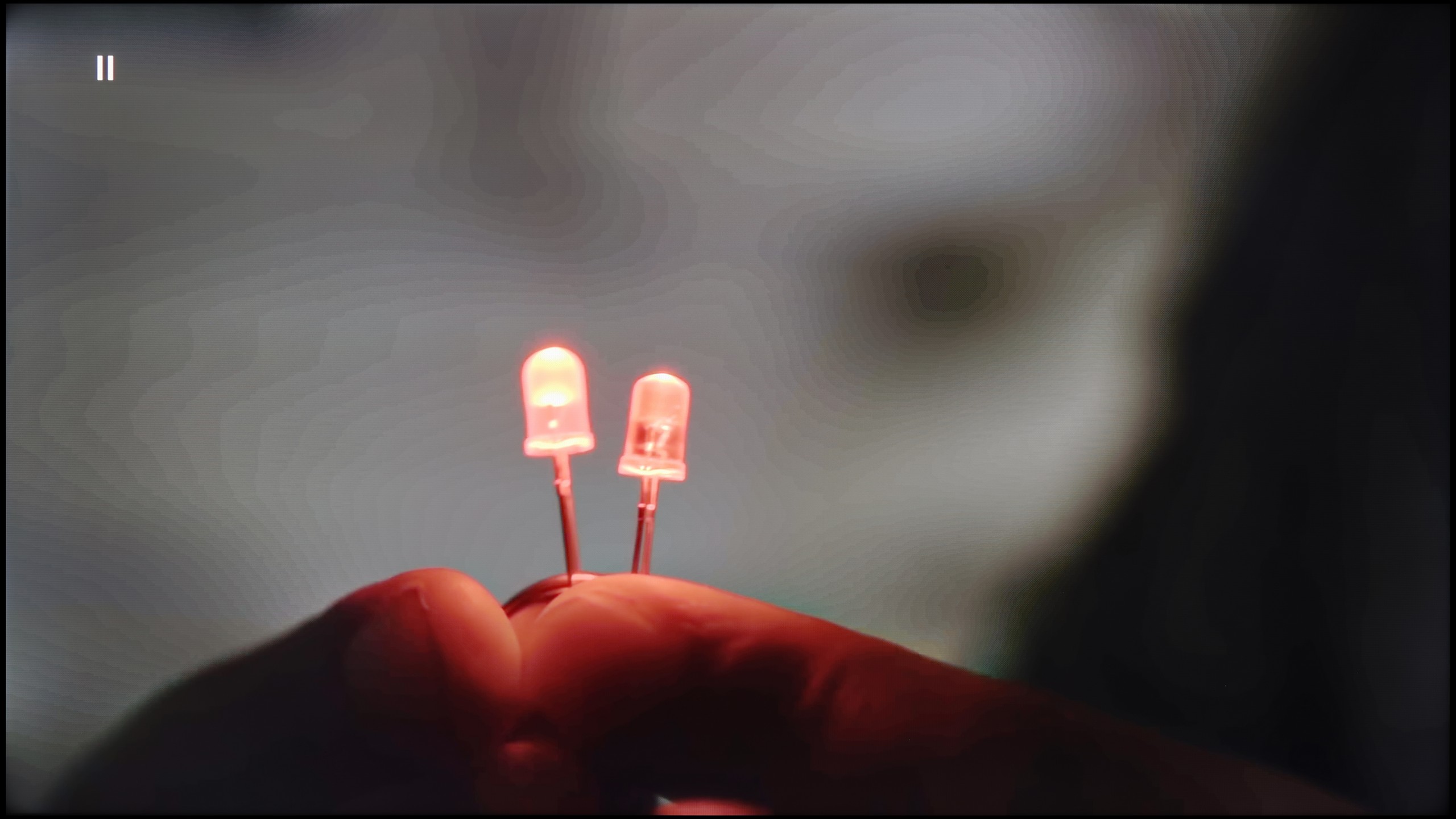
Image without overscan on the SD signal


Samsung QN70F offers a distortion reduction feature that enhances the smoothness of tonal transitions. In "Standard" mode, it works quite well – it smooths out problematic transitions without significantly interfering with the structure of the image. Film grain is somewhat reduced, but details such as texture and skin structure remain visible. The "High" mode is much more aggressive. The smoothing is stronger, but it comes at the cost of a noticeable loss of detail. Therefore, in practice, we recommend sticking with the "Standard" setting or completely turning this function off. The improvement in gradation may be less spectacular, but the image retains more naturalness.
When it comes to scaling low-quality content, the QN70F performs very well. Tests with lower resolution images were really very good. Despite slight edge ringing, everything looks clean and clear, even if the original content was very poor. It’s just a pity that the television has an issue with overscan, which cannot be completely turned off. As a result, images with very low resolution may be slightly cropped, which is mainly noticeable on subtitles or interfaces.
With native SDR content, the Panasonic W85B performs very well – tonal transitions are smooth and natural, without artificial bands or prominent contours. However, the situation is worse when it comes to lower resolution materials. It is precisely there that the television has the most difficulty with "enhancing" the image. The lack of any option in the menu that would allow for improving gradation means that with older films or materials from YouTube, one can sometimes notice slight issues with colour blending.
Fortunately, upscaling, or raising the quality of lower resolution content, performs much better. This is definitely a strong point of this model – the image is scaled cleanly and in detail, and the television handles this better than one might expect from such an inexpensive piece of equipment. This is thanks to the HCX processor, which Panasonic has been developing for years, and it is noticeable that even in the lower series it can do a good job.
Blur and motion smoothness
7.5/10
6.5/10
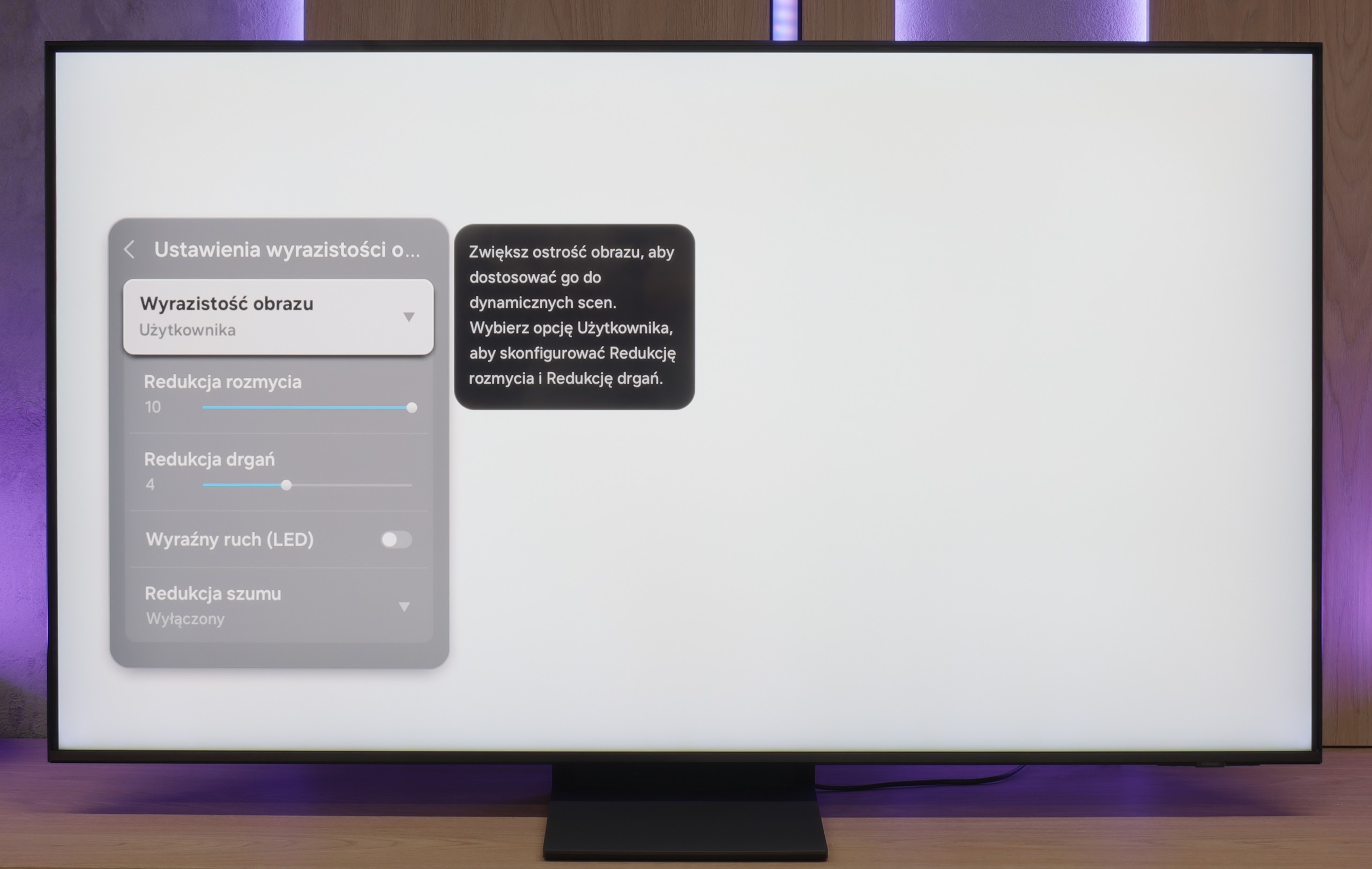
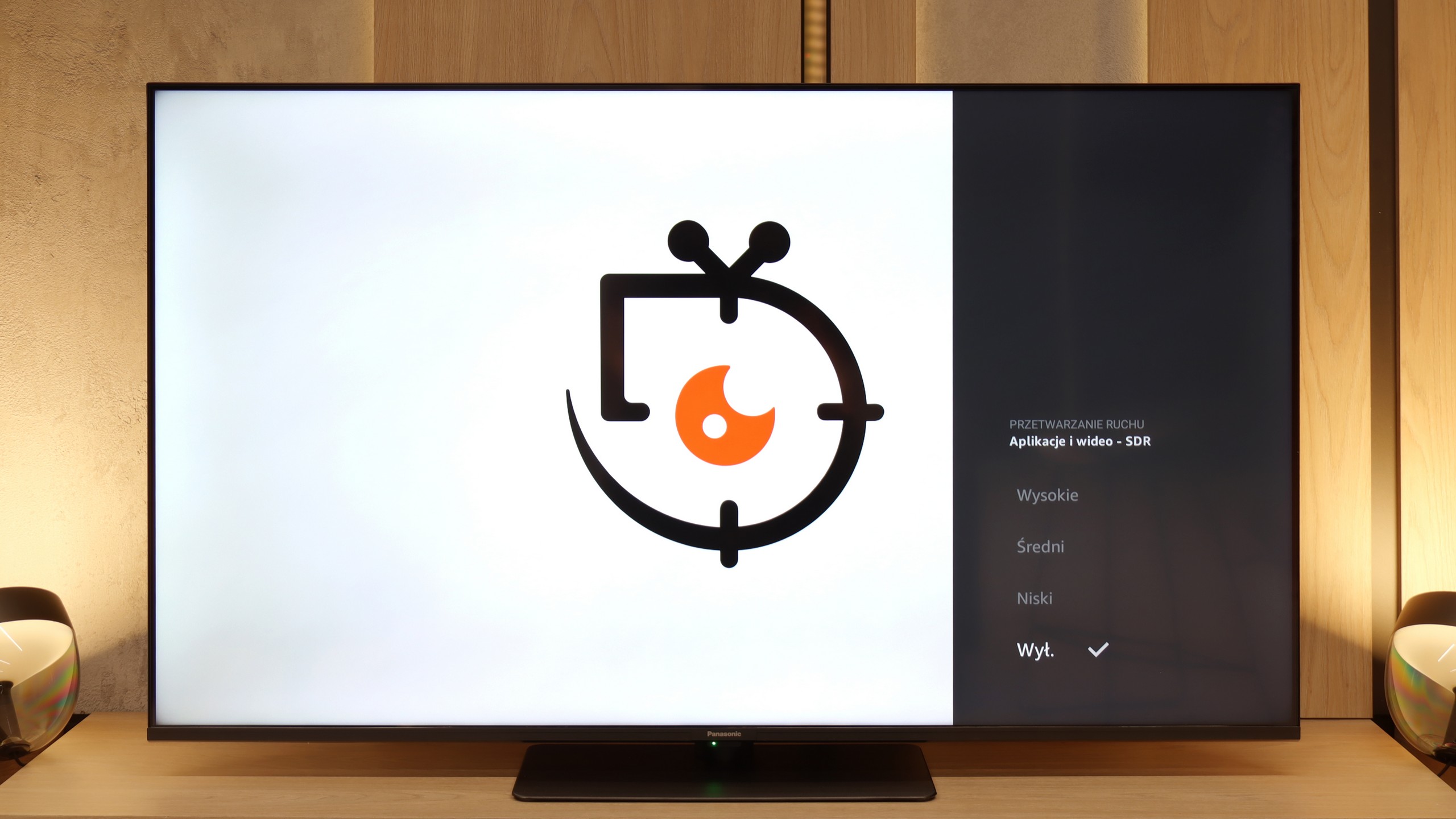
Blur (native resolution, maximum refresh rate):






Blur (BFI function enabled):
Image flickers in this mode



Blur (4K 144Hz):



Blur (4K@144Hz):



The QN70F is a television with a refresh rate of 144 Hz, which in itself places it among the top when it comes to image fluidity. Whether we are watching dynamic sports broadcasts or playing on a console – the picture looks very good. There is no sense of stuttering, choppiness, or the typical "tearing" associated with weaker models during fast motion. Samsung also allows you to adjust the fluidity to your own preferences. In the picture clarity settings, we find options such as blur reduction and judder reduction – each of which we can adjust independently. This is especially useful when watching content with a lower frame rate and wanting to give it a smoother, more theatrical character – or conversely, to maintain the natural cinematic "feel" of 24 frames.
At first glance, everything looks good – the Panasonic W85B has a 120 Hz panel and even a 144 Hz mode, so it seems that it should cope well with smooth motion. The problem arises when we look into the settings. The options for improving fluidity are supposedly present in the menu, but in practice… they don't change anything. No matter what we choose, the image looks the same. On top of that, there is a lack of BFI, or the black frame insertion mode, which on many televisions helps sharpen motion. And suddenly it turns out that despite the strong panel, the W85B offers us no real tools to adjust motion according to our needs. It’s only good when the source itself operates at a higher frequency – for example, games at 120 Hz. But when it comes to films or sports, we simply have to accept what the television shows us, because nothing more can be done about it.
Console compatibility and gaming features
8.2/10
8.5/10
- ALLM
- VRR
- VRR range48 - 144Hz48 - 144Hz
- Dolby Vision Game Mode
- Correct implementation of HGIG
- 1080p@120Hz
- 1440p@120Hz
- 4K@120Hz
- Game bar
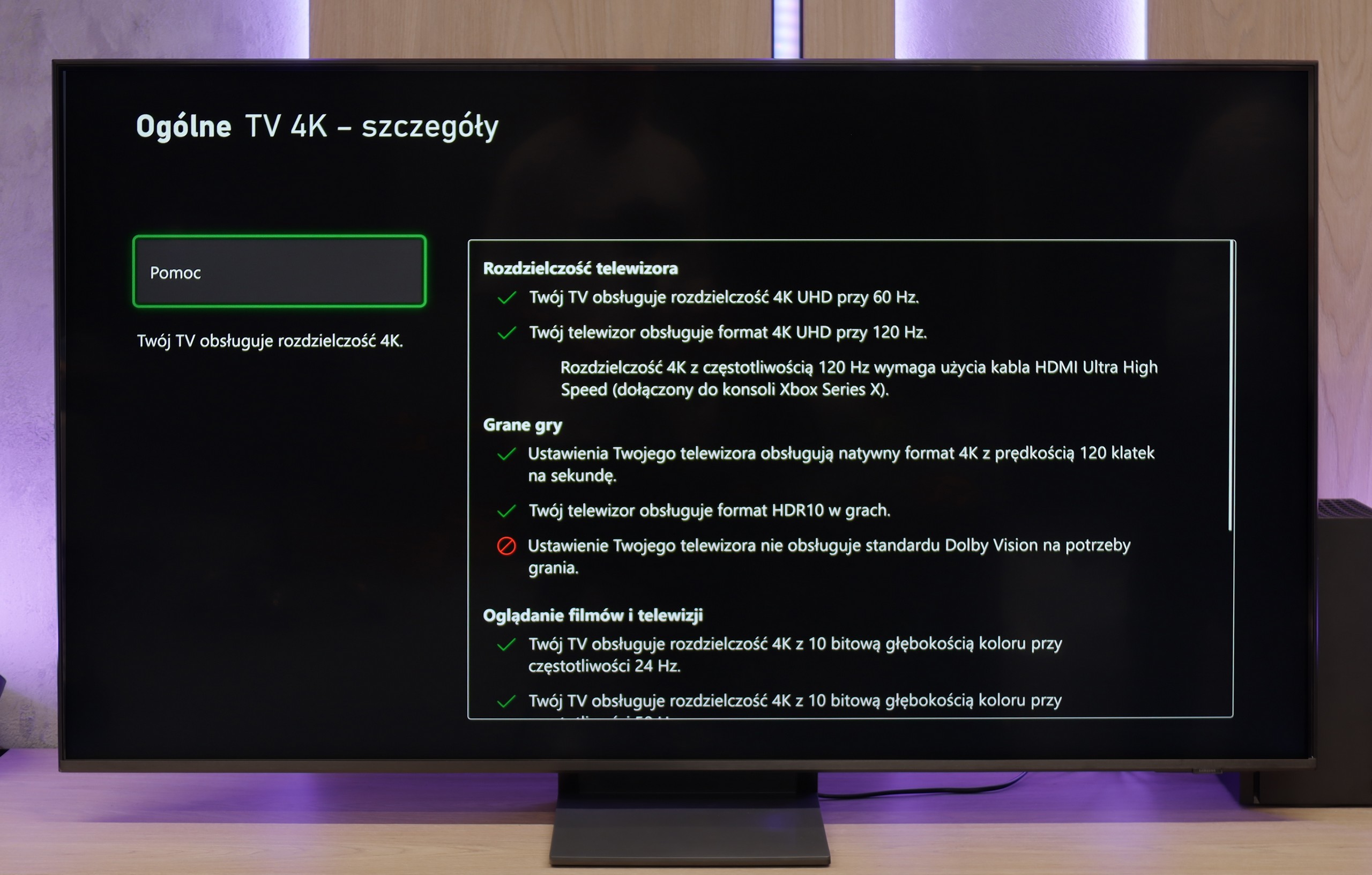
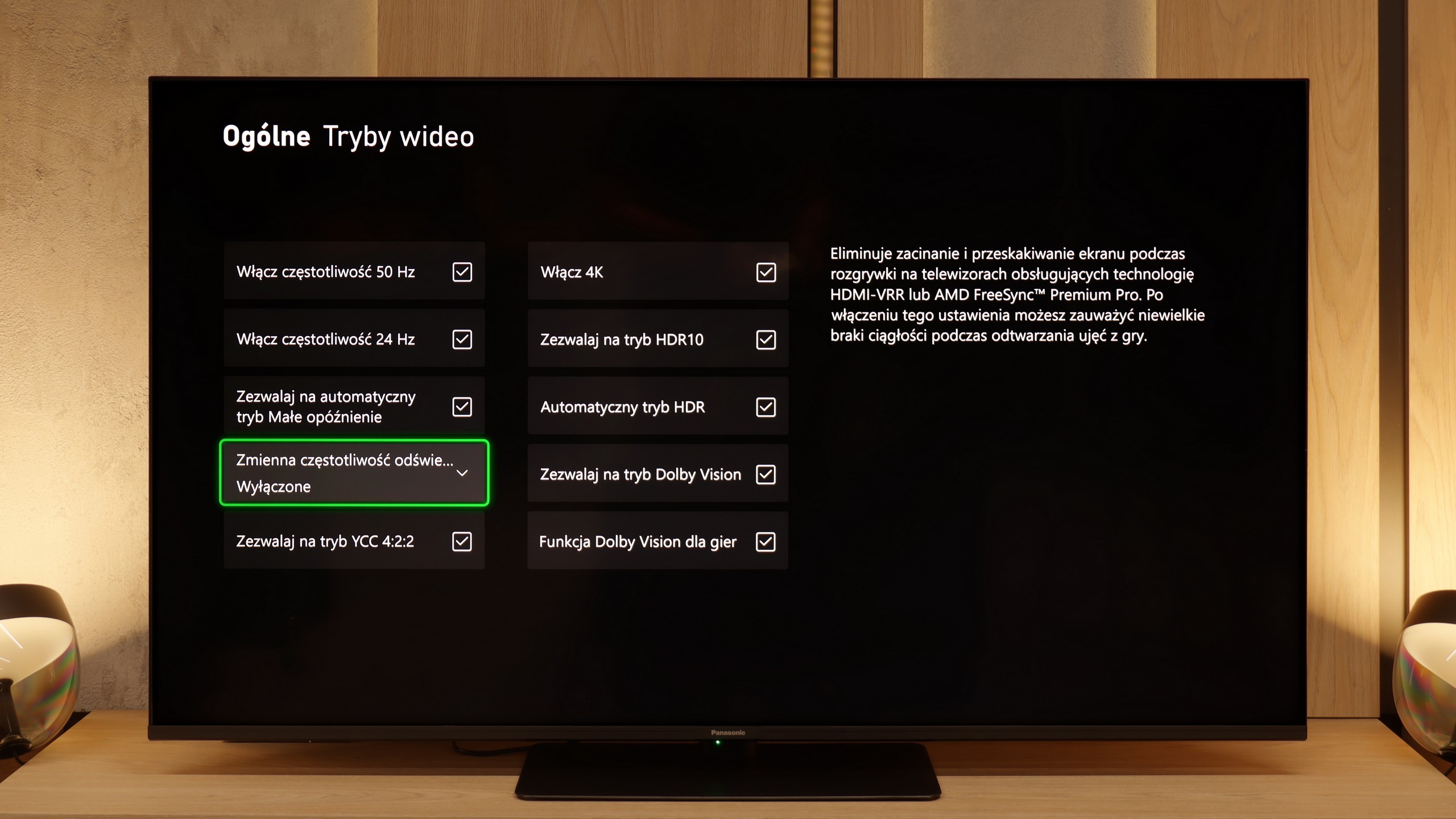
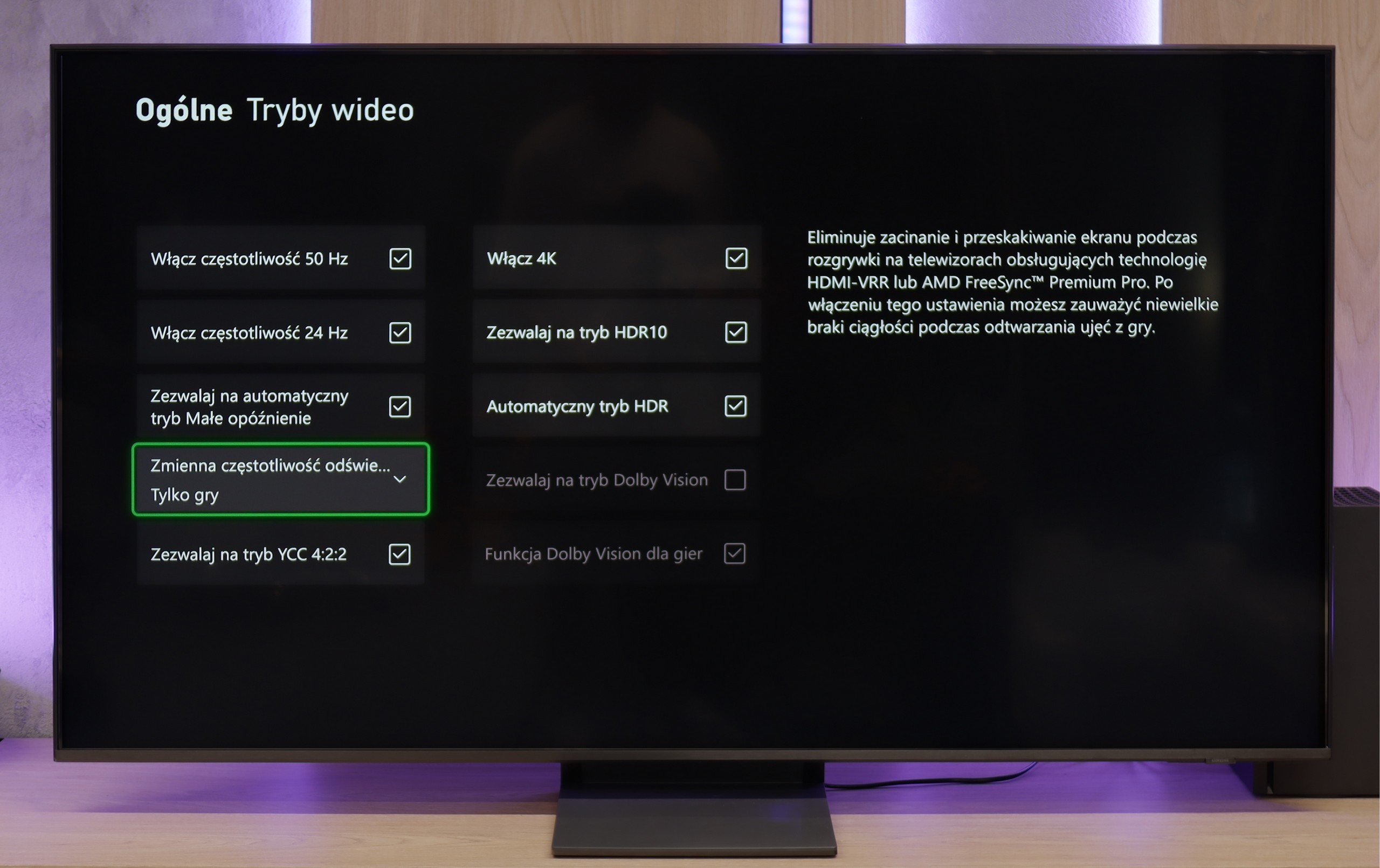
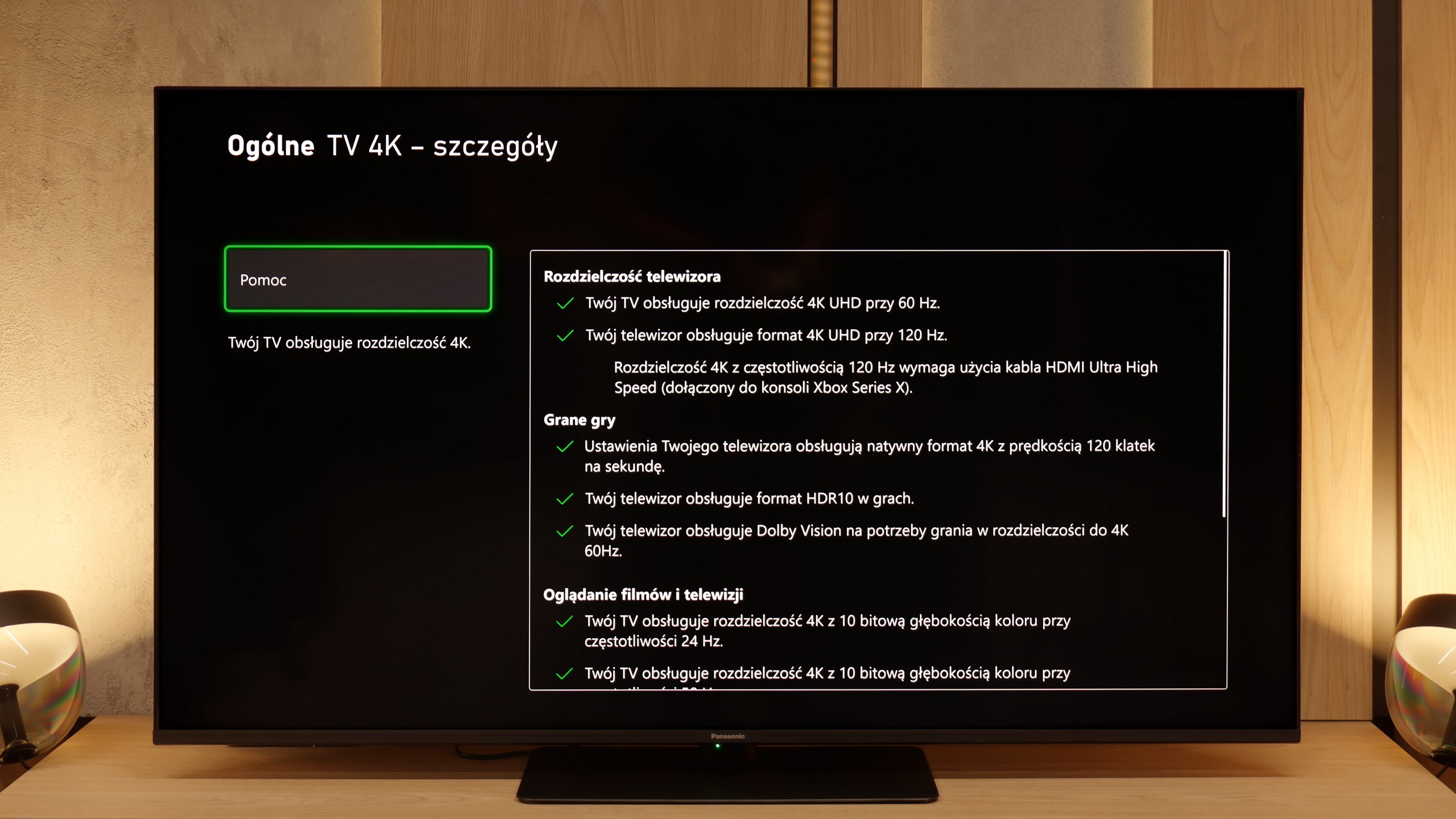
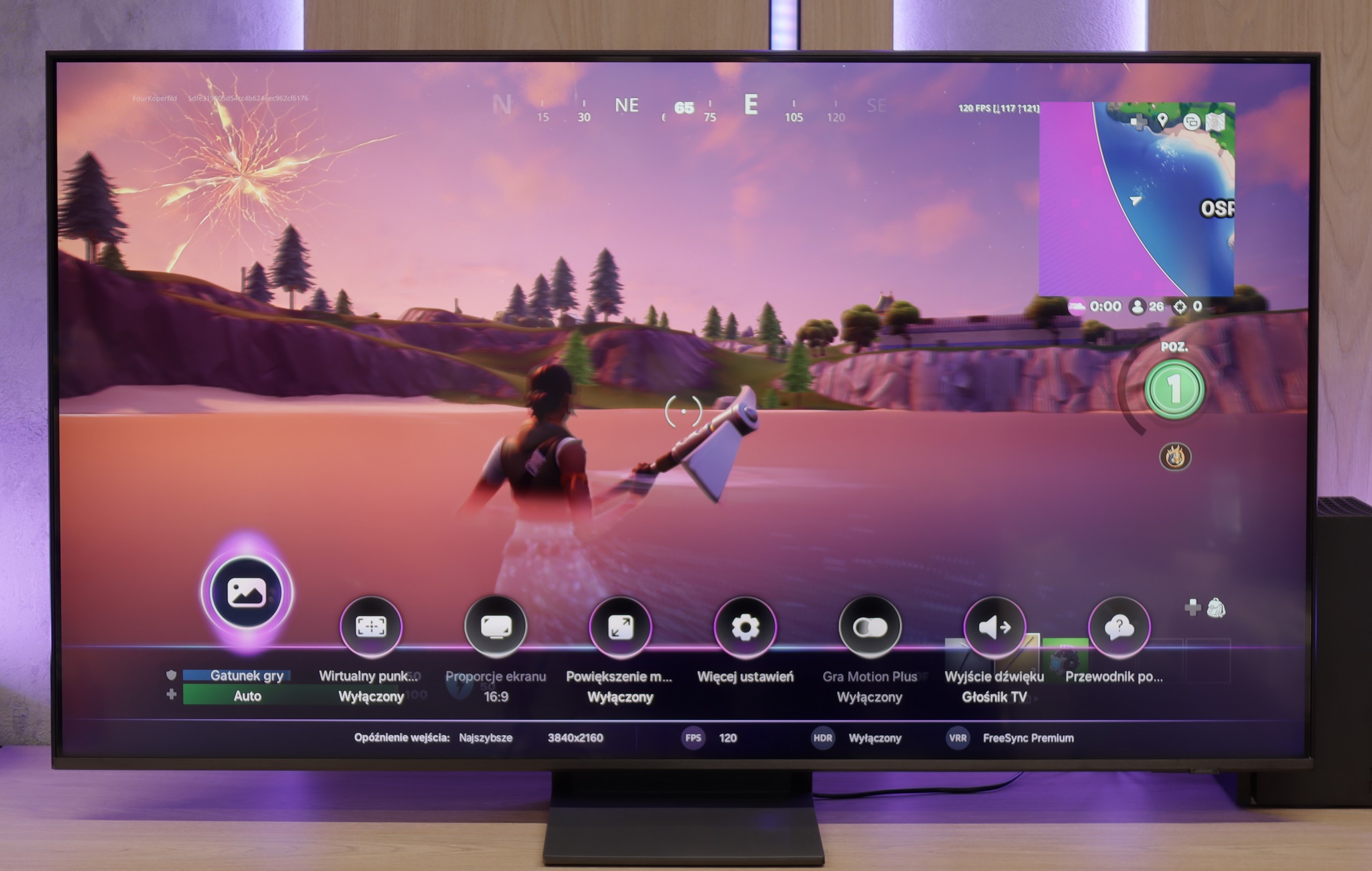
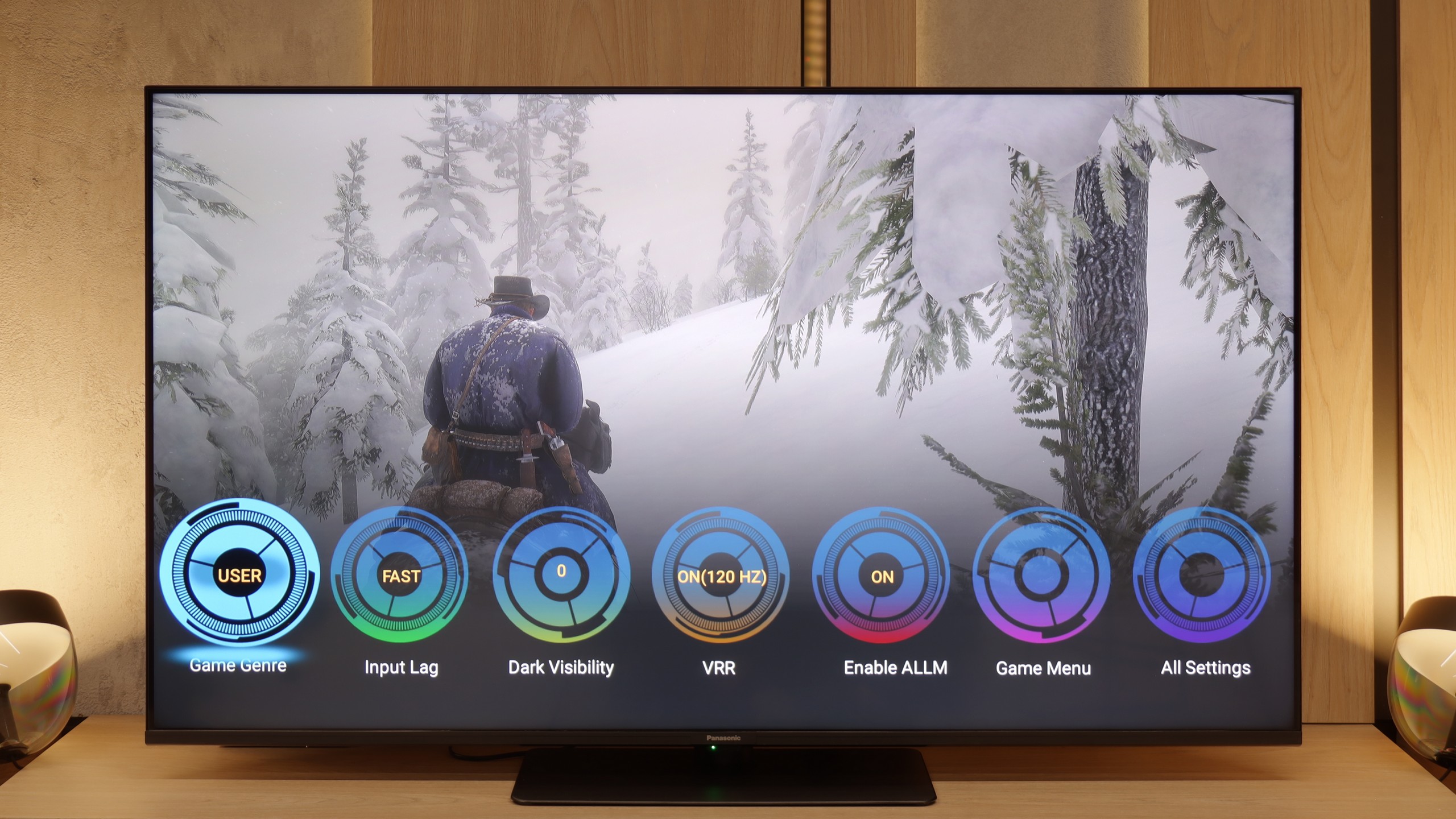
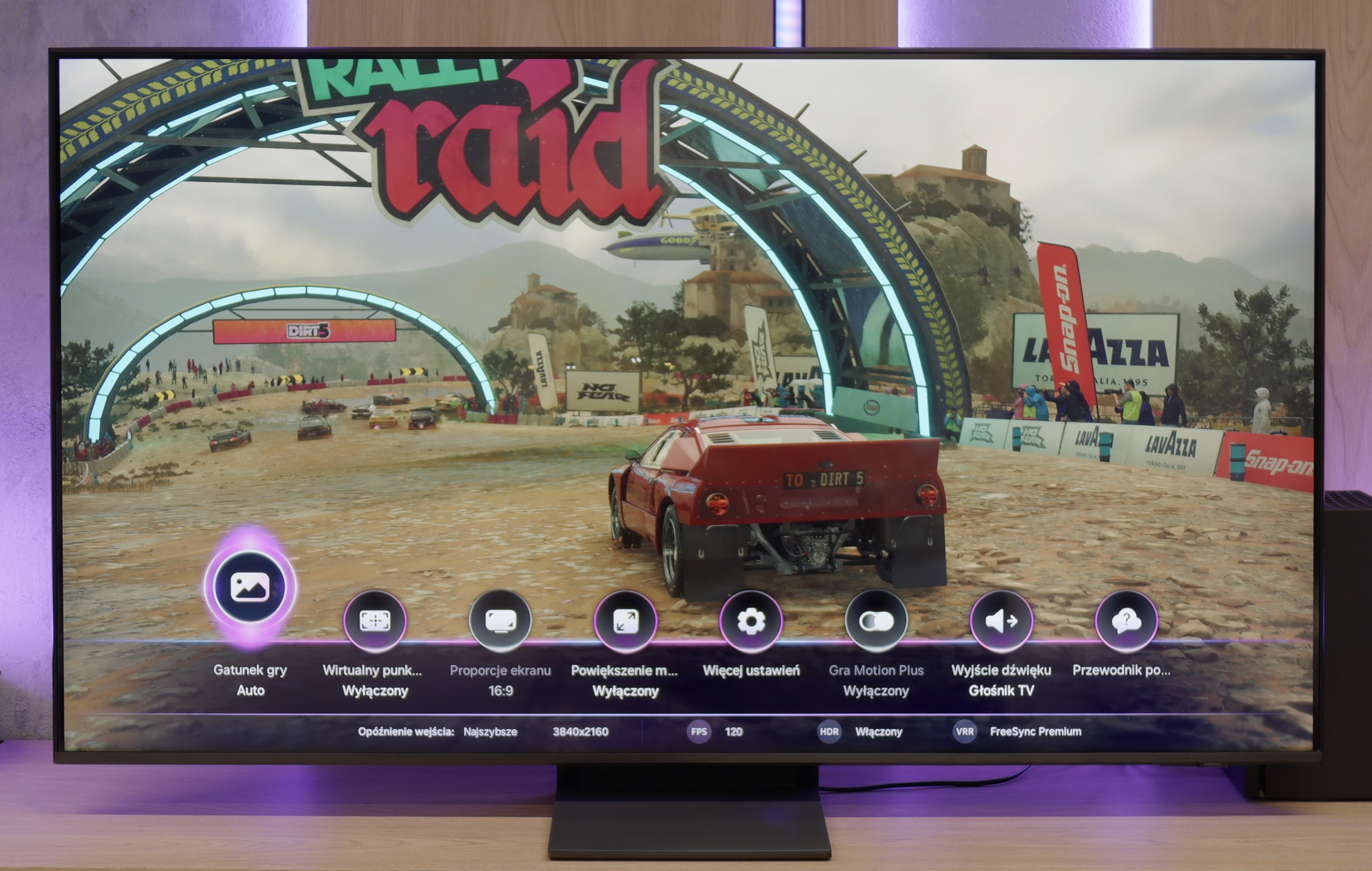
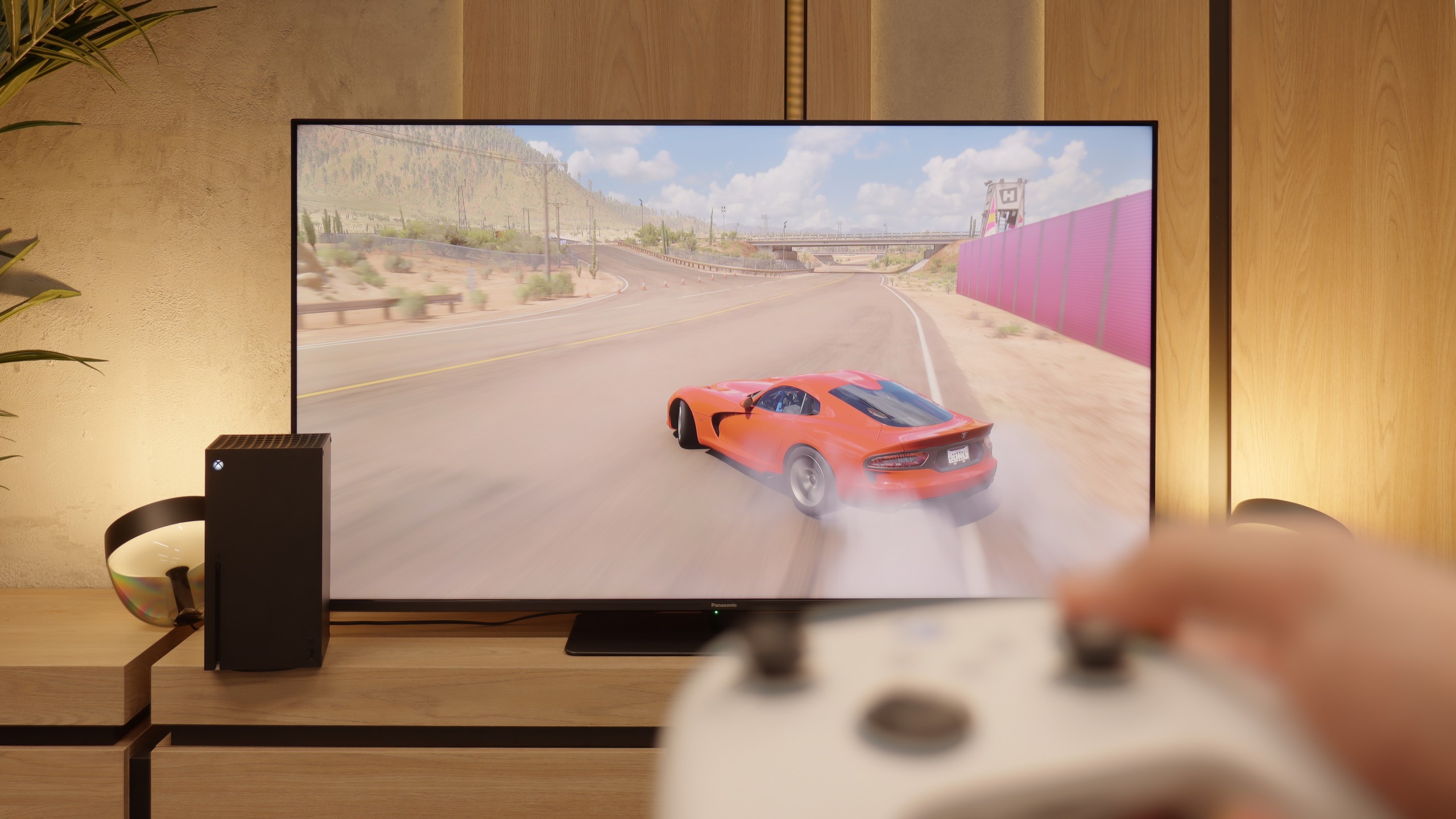
The Samsung QN70F is truly a solid choice for gamers. Here, we find as many as four HDMI 2.1 ports with full bandwidth of 48 Gbps, meaning full support for gaming in 4K at a refresh rate of 144 Hz. Additionally, it includes all the essential features we expect today: automatic game mode (ALLM), variable refresh rate (VRR), and a very well-designed, intuitive Game Bar showing information about mode, resolution, and frame rate.
Also noteworthy is the Game Motion Plus feature, which allows artificial frames to be added to games running at 60 fps or less. This works surprisingly well and in many titles – particularly those where consoles struggle to maintain a stable framerate – it improves the fluidity of gameplay without significant delay.
Unfortunately, there are some drawbacks. The lack of support for Dolby Vision mode is not surprising – it’s a standard with Samsung. However, the absence of the HGiG feature is much more disappointing. Worse still, it was removed with a software update, which may leave users who previously relied on it quite puzzled. Without HGiG, it is impossible to manually set the maximum HDR brightness from the console, resulting in some games appearing slightly washed out – especially if the television misinterprets the tonal range. Why Samsung, a brand that has set standards for gaming features for years, decided to take such a step is hard to say. At the time of writing this review, the tested television was running on software version 1110 – and frankly, if you care about full support for gamers, it’s better to hold off on updates for the time being.
On paper, the Panasonic W85B looks really solid. It has two full HDMI 2.1 ports, support for ALLM, variable refresh rates, Dolby Vision in games, and of course, a high refresh rate of the panel itself. Additionally, it features Panasonic's characteristic game tools bar – a "game bar" that allows you to preview key parameters and quickly change them if needed with a single click. This sounds great, but the problem arises when we turn on HDR. Here, the W85B suffers significantly, as there is practically no HGiG implementation – the television poorly manages brightness, and instead of an accurate picture, we get scenes that are too bright, sometimes even blown out. The solution? The simplest one – turn off HDR in the console settings and leave everything in SDR. And this is where it gets really interesting, as in this scenario, the W85B shows its better side. Low input lag, high fluidity thanks to 120 Hz – all of this makes gaming look phenomenal. Indeed, HDR can be forgone, but if the priority is responsiveness and smooth gameplay, the W85B offers a lot of fun.
Input lag
10/10
9.8/10
SDR
HDR
Dolby Vision
QN70F does not disappoint in terms of response time either. For 120 Hz materials, the input lag hovers around 8 ms, which can be considered a very good result – especially in the context of online competition or dynamic action games. The screen responds to the movements of the controller almost instantaneously, with no noticeable delay. As a result, the gameplay is smooth and comfortable, even in more demanding titles. In this category, Samsung still maintains a high standard, and it is hard to find anything that could raise objections.
There is really nothing to worry about here. The Panasonic W85B responds instantly to our movements, and the values measured in tests can comfortably compete with monitors for gamers. At a 120 Hz signal, the input lag is around 8–10 ms, while at 60 Hz it hovers around 17–20 ms. In practice, this means one thing – no delays, no frustration! You press the button, and the action happens on the screen straight away.
Compatibility with PC
8.2/10
8.6/10
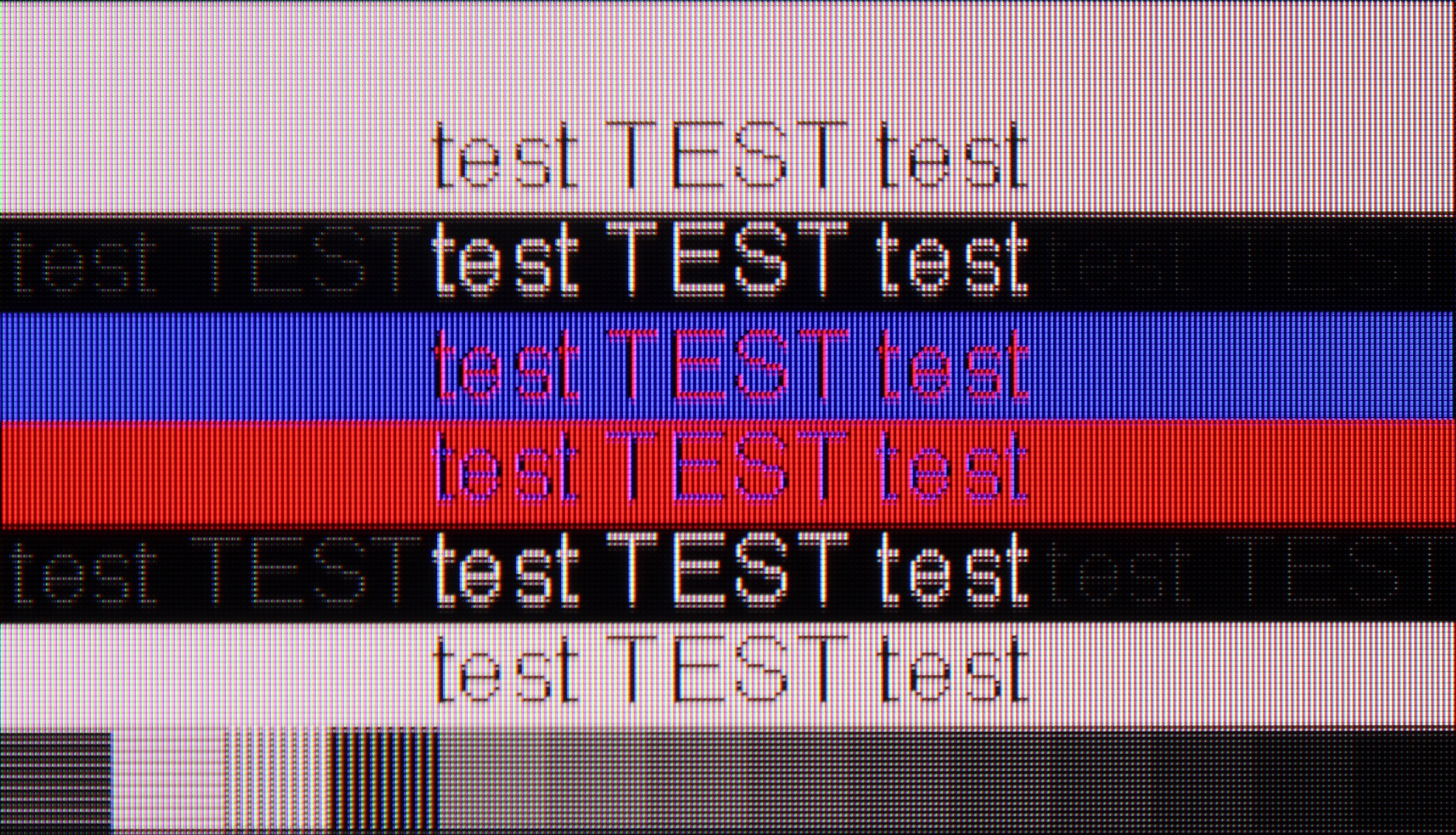
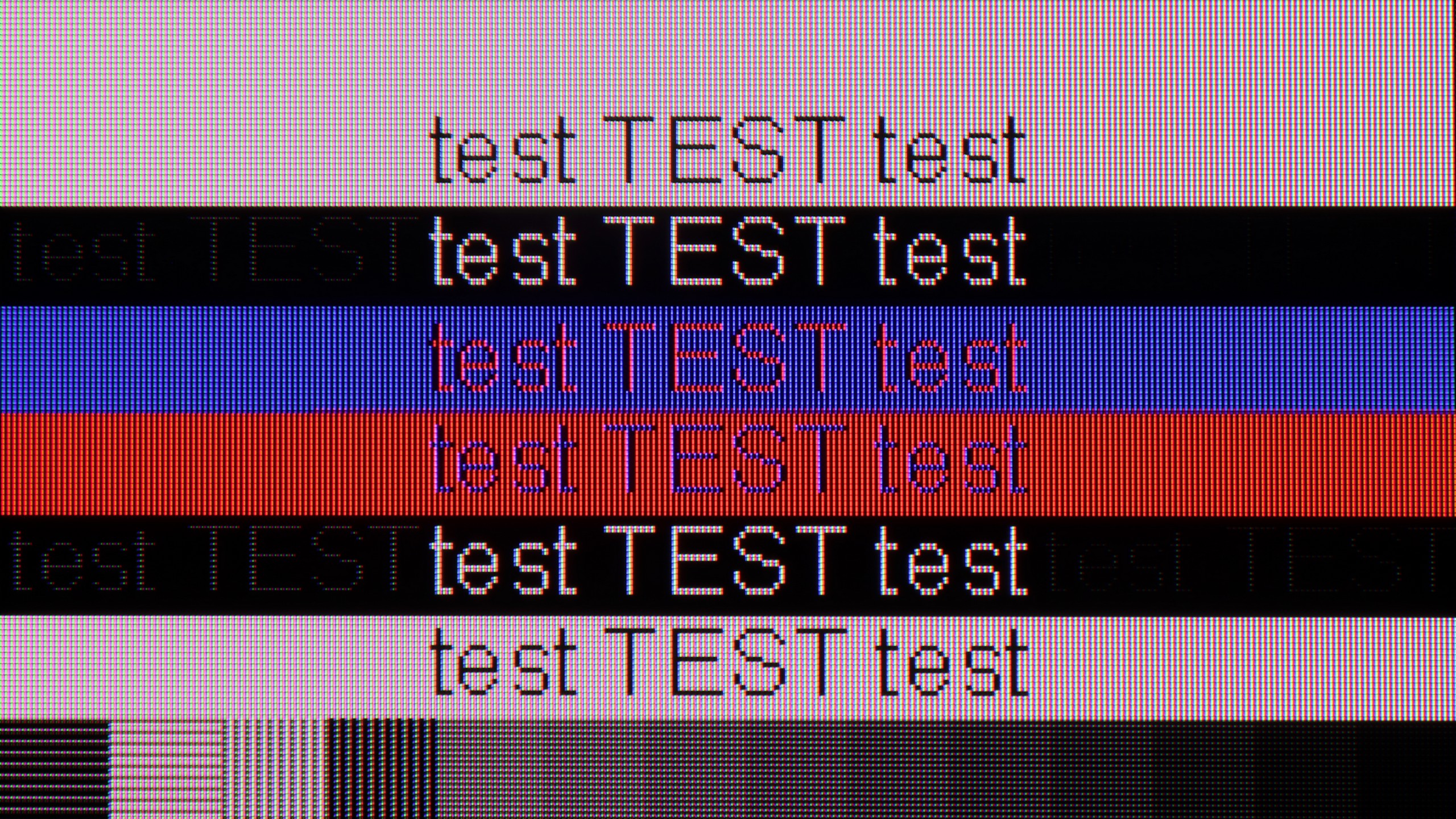
Let's start with the best aspect of connecting the QN70F to a computer – gaming. A refresh rate of 144 Hz, support for G-Sync compatible VRR, and very low input lag create the perfect recipe for an almost ideal screen for PC gamers. In this role, the QN70F truly does not disappoint – games look smooth, responsiveness is at a very high level, and everything runs stably.
However, the performance regarding text work is somewhat lacking. At a resolution of 4K and a refresh rate of 144 Hz, there is a noticeable blurriness in the font contours – text may appear slightly smeared, with a slight “layering” of the contours. This is not a problem that undermines the usability of the QN70F as a monitor, but individuals planning to do office work or text editing on this screen should keep this in mind.
The Panasonic W85B performs surprisingly well as a computer monitor. It is perfectly suited for office work – the fonts are sharp and very readable thanks to full chroma 4:4:4 support, so you can easily write, browse pages, or work on spreadsheets. But the real fun begins when gaming. The television handles refresh rates of up to 144 Hz for PC without any issues, and it also supports popular image synchronisation technologies such as NVIDIA G-Sync and AMD FreeSync. This means we don't have to worry about screen tearing or stuttering – gameplay is smooth and looks simply fantastic.
Viewing angles
3.1/10
3.2/10
As for the VA panel, the viewing angles on the QN70F are typical – meaning rather average. The image quickly loses contrast and saturation when we start looking at the screen from a greater angle. Compared to IPS panels, it performs significantly worse. On the other hand – thanks to this panel, we gain better blacks and higher contrast when viewing straight on, which will be more important for many users than wide visibility from the sides.
Here you can see the biggest price we pay for the high quality of the VA matrix contrast. The W85B, like most televisions with this type of panel, does not perform very well when viewed from a wider angle. Colours lose intensity and the image begins to fade as soon as we move away from the screen's axis. This is not a flaw of Panasonic itself, but rather a characteristic of VA technology – excellent contrast in exchange for poorer viewing angles. So if you plan to watch films with a larger group and often sit "off to the side," you need to keep this in mind.
Daytime performance
6.3/10
4.2/10
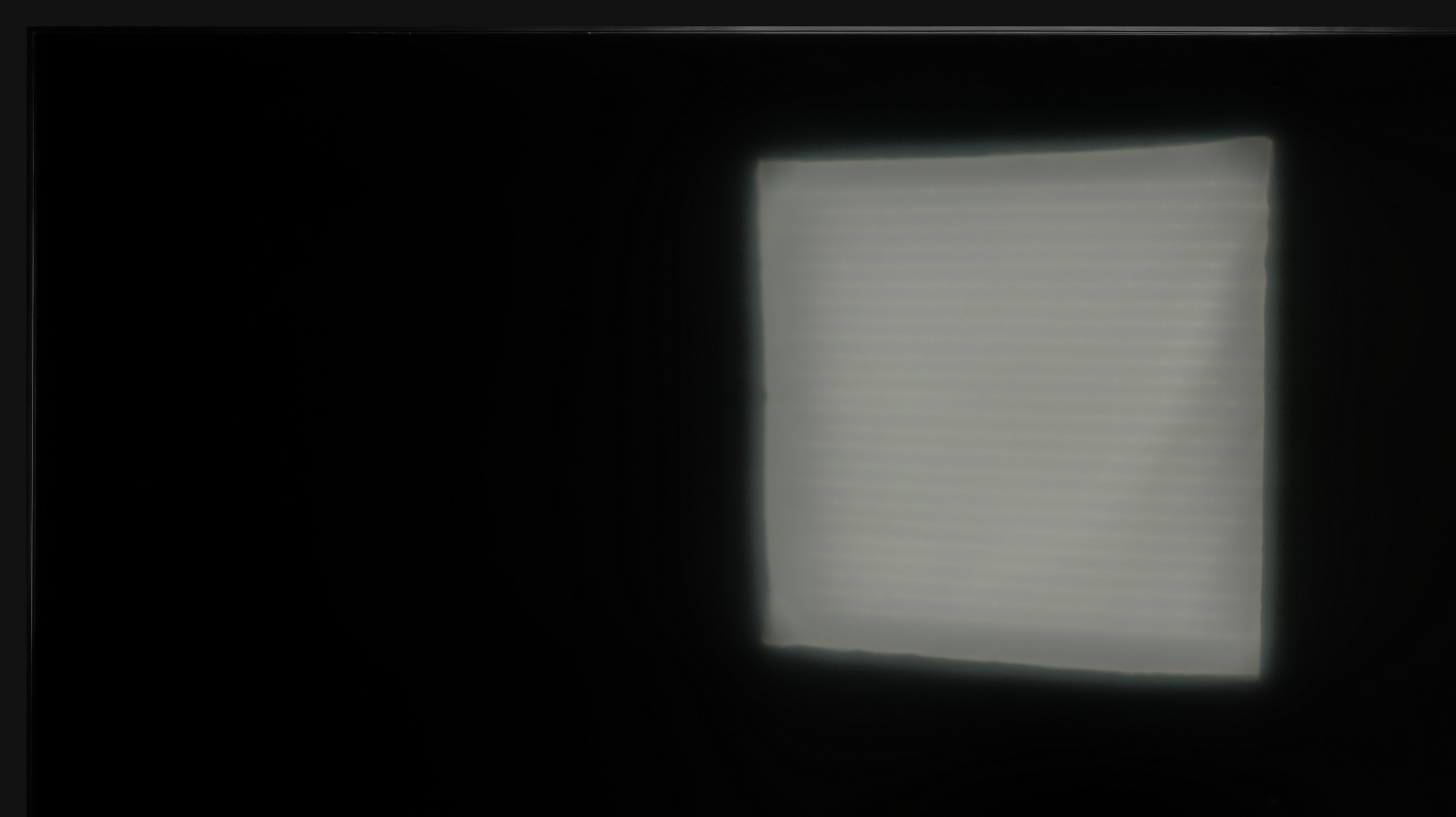
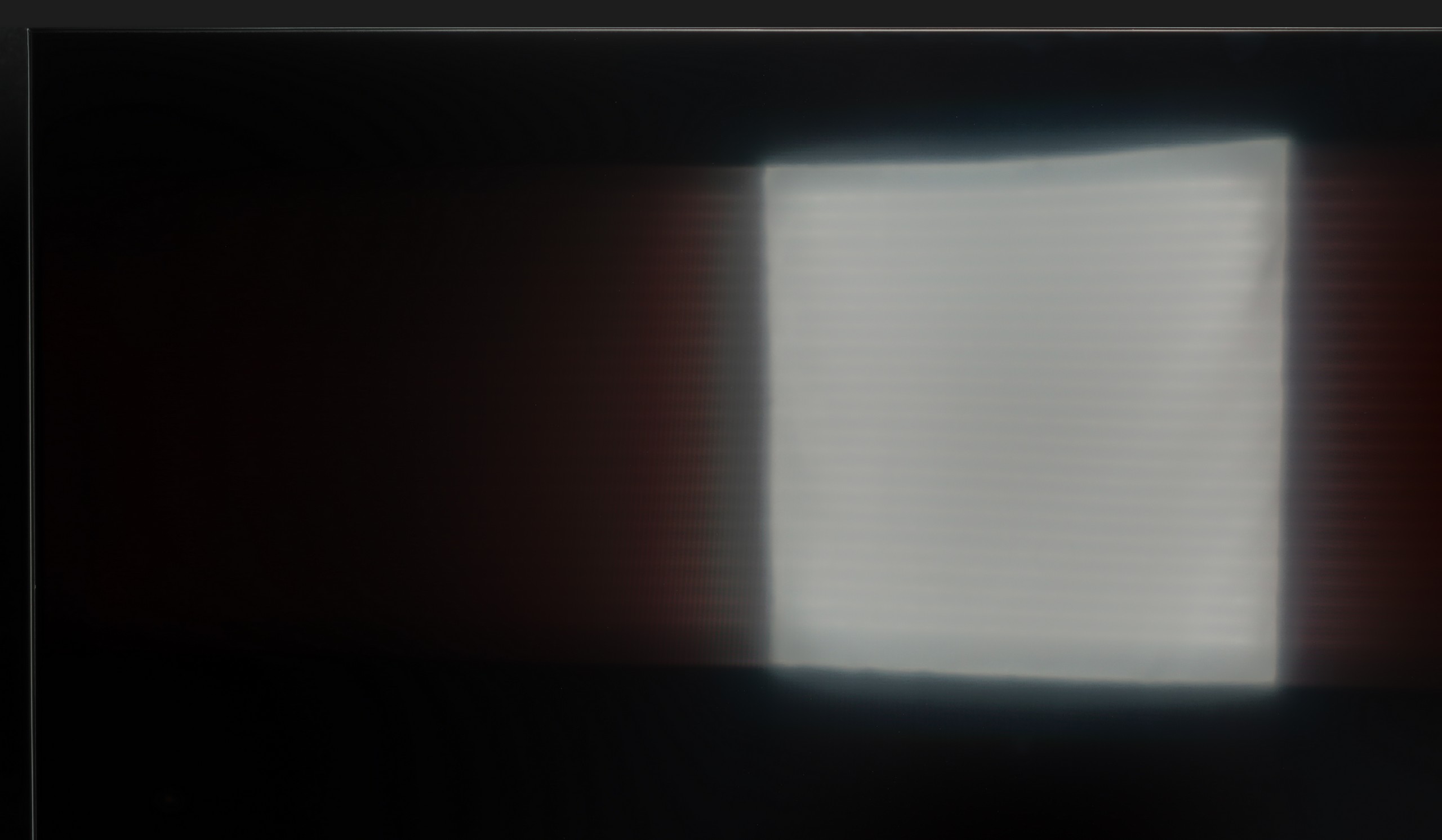


Panel brightness
Average luminance SDR
Panasonic W85: 263 cd/m2
Samsung Neo QLED QN70F / QN74F / QN77F: 492 cd/m2
The QN70F handles a bright living room without any issues. The screen has a satin finish that effectively suppresses reflections, so there's no need to immediately draw the curtains to see anything. Even when there's plenty of light in the room – for example, with a window to the side – the picture still looks clear and vibrant. The brightness is also at a solid level. In SDR mode, the television averages around 500 nits, which is more than sufficient for daytime viewing. While it may not reach the levels of top models, in practice – for everyday television watching, sports, or YouTube – it performs very well.
The Panasonic W85B features a satin-finish panel that performs quite well in reducing reflections and maintaining colours even under strong light from windows or lamps. There is no "mirror" effect here, so watching television in a typical living room during the day is comfortable. However, the problem arises in really bright rooms – the television does not have high brightness, so it cannot compete with very strong sunlight. It is simply a screen that performs best in controlled conditions.
Panel details
Subpixel Structure:
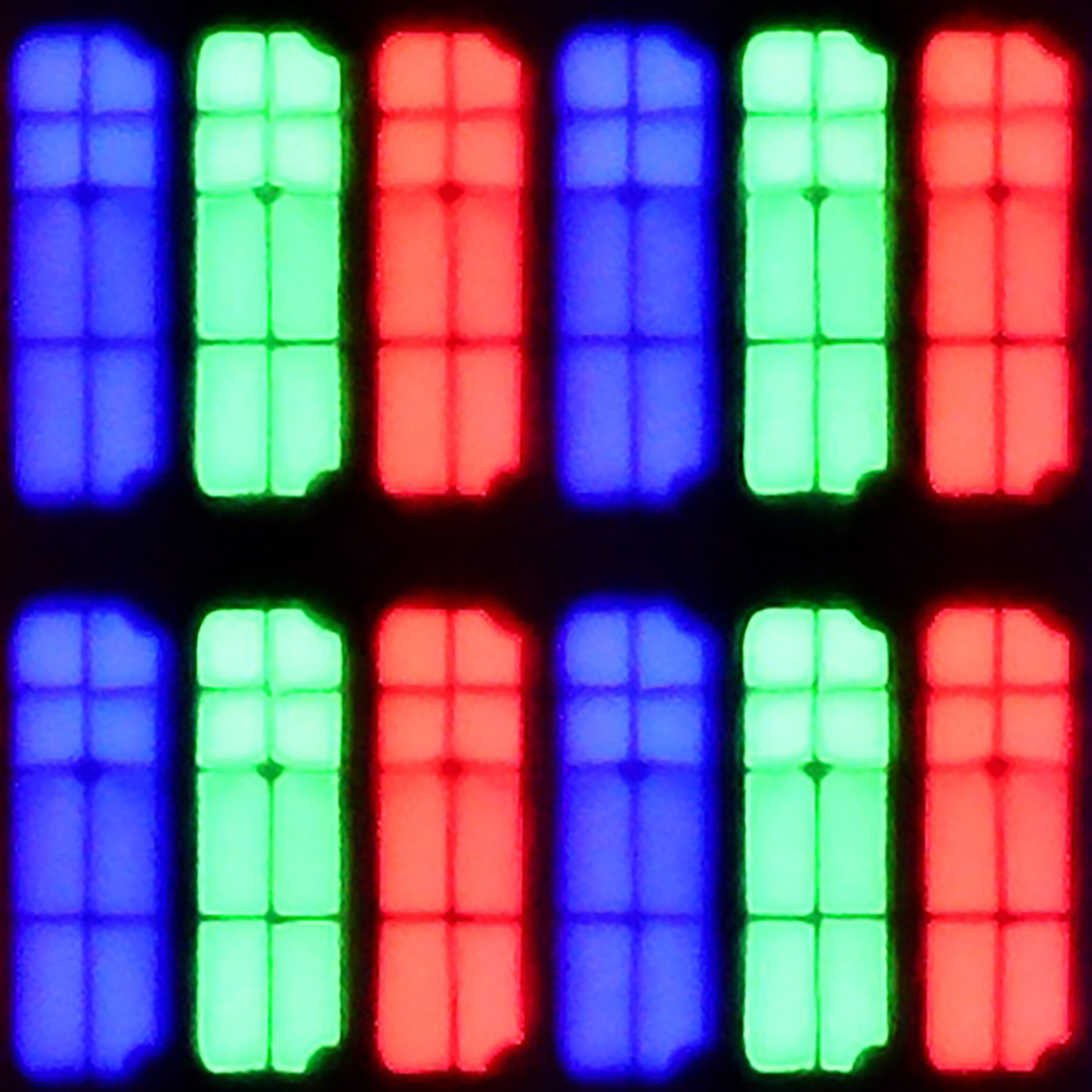
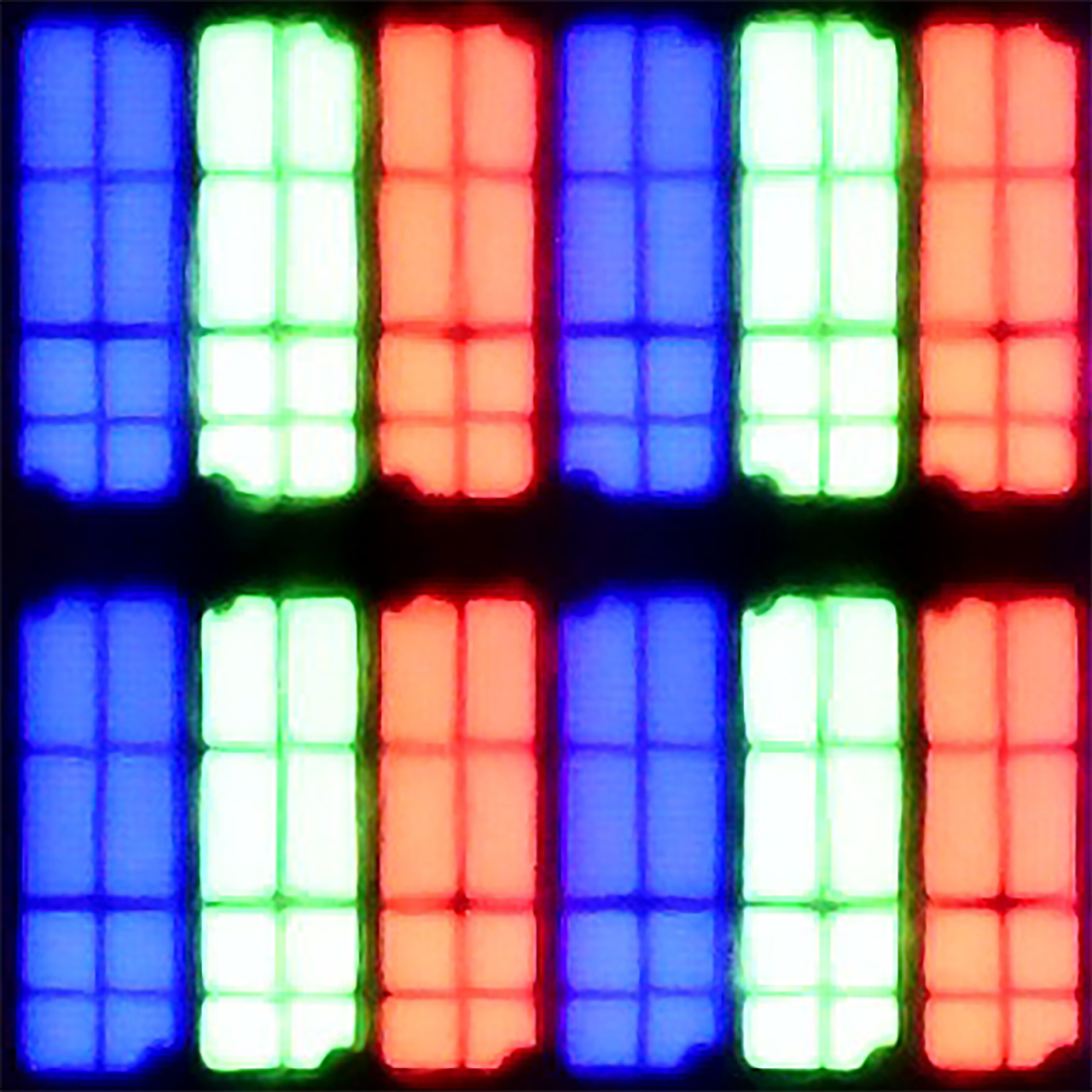
Panel uniformity and thermal imaging:


Samsung Neo QLED QN70F / QN74F / QN77F
Panasonic W85
TV features
7.2/10
6.8/10
- HDMI inputs0 x HDMI 2.0, 4 x HDMI 2.1 48Gbps1 x HDMI 2.0, 2 x HDMI 2.1 48Gbps
- OutputsToslink (Optical audio), eARC (HDMI), ARC (HDMI)Toslink (Optical audio), eARC (HDMI), ARC (HDMI), Mini-Jack (Headphones)
- Network InterfacesWi-Fi 2.4GHz, Wi-Fi 5GHz, Ethernet (LAN) 100MbpsWi-Fi 2.4GHz, Wi-Fi 5GHz, Ethernet (LAN) 100Mbps
- TV receptionDVB-T, DVB-T2, DVB-S, DVB-S2, DVB-CDVB-T, DVB-T2, DVB-S, DVB-S2
Classic features:
- Recording to USB (terrestrial TV)
- Recording programming
- Picture in Picture (PiP)
- RF remote control (no need to aim at the screen)
- Backlit remote control
- Teletext
- Audio only mode
- Bluetooth headphones support
- Simultaneous Bluetooth headphones & TV audio
Smart features:
- AirPlay
- Screen mirroring (Windows Miracast)
- Voice search
- Voice search in native language
- Ability to connect a keyboard and mouse
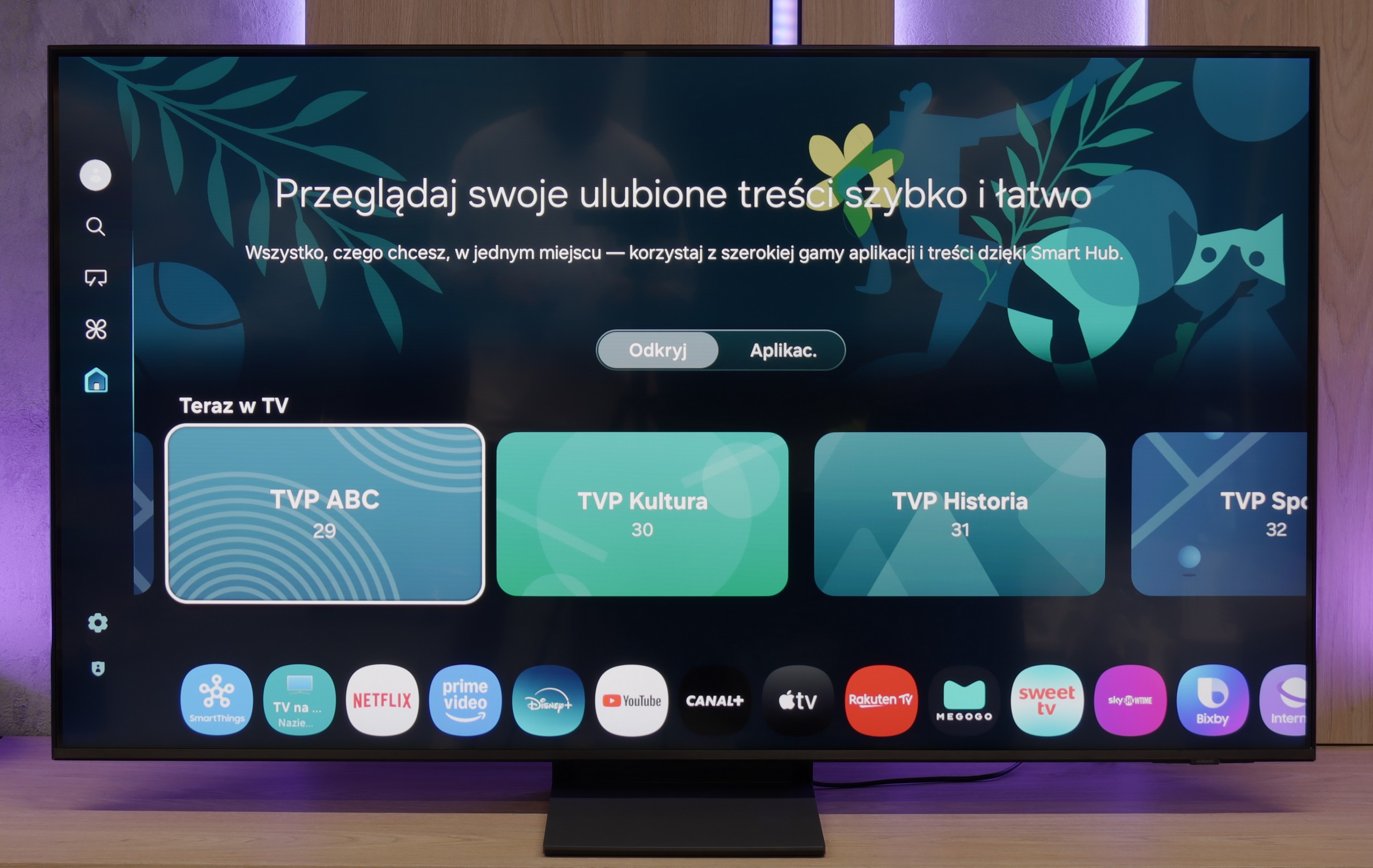
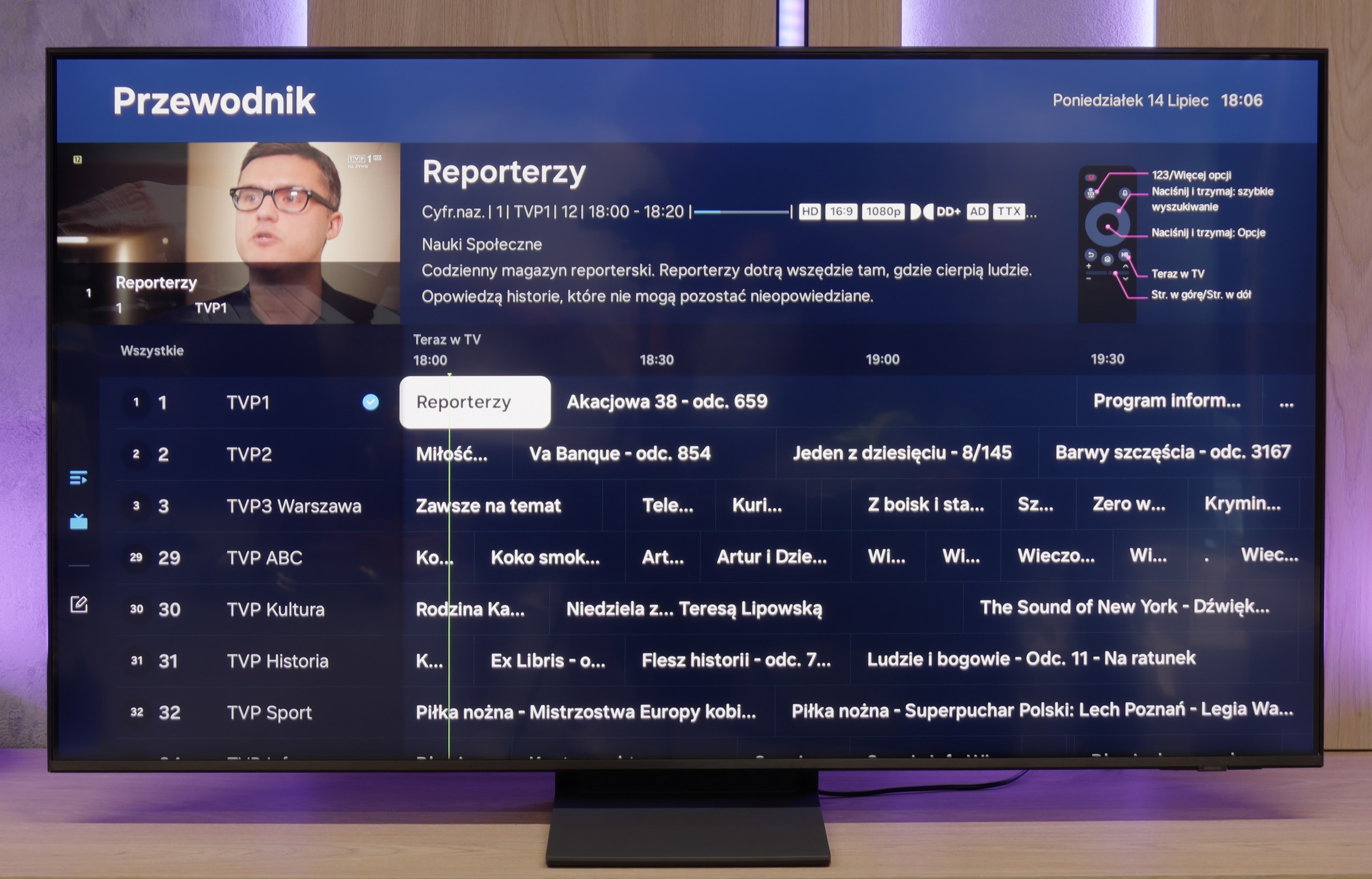
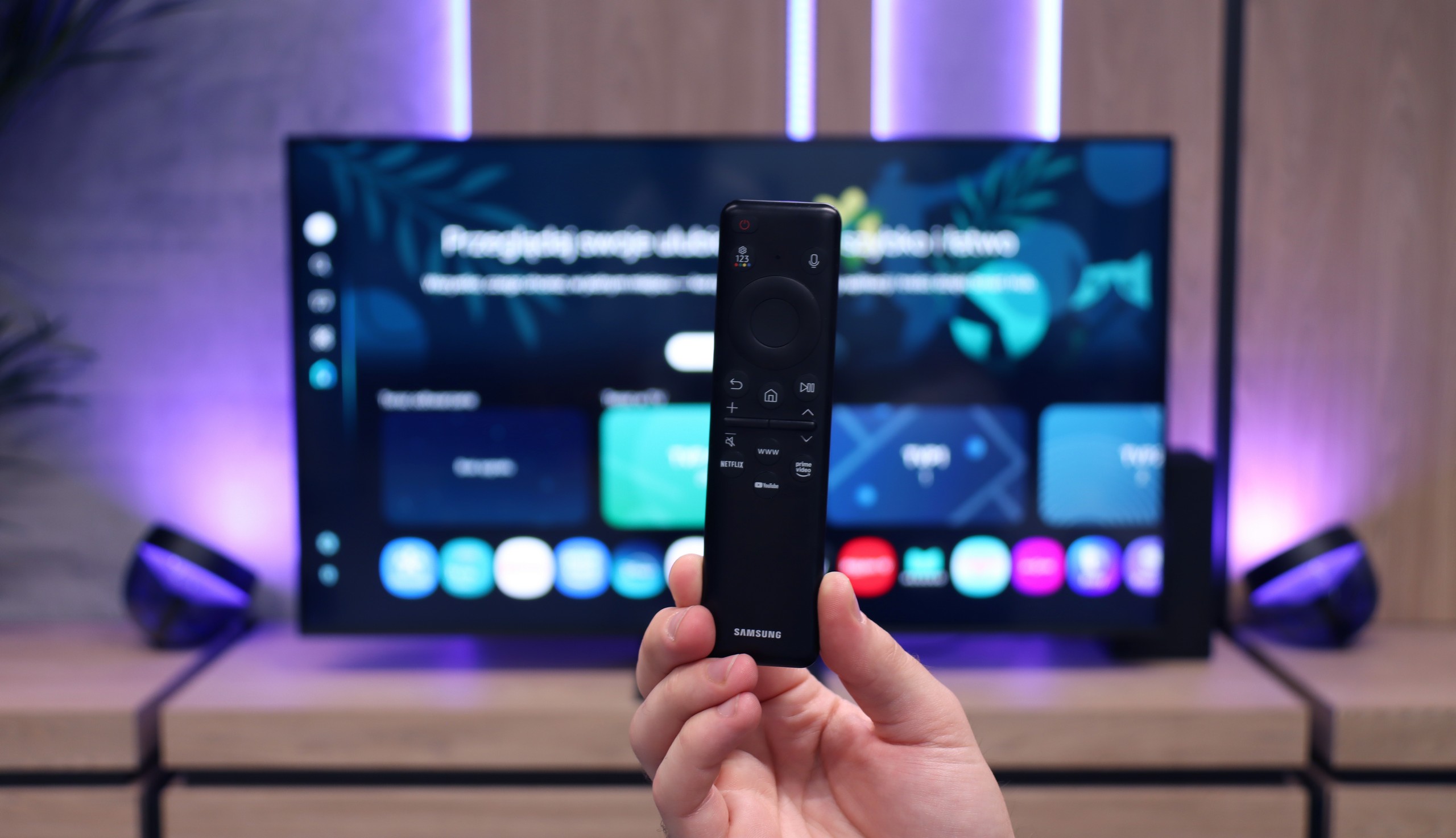
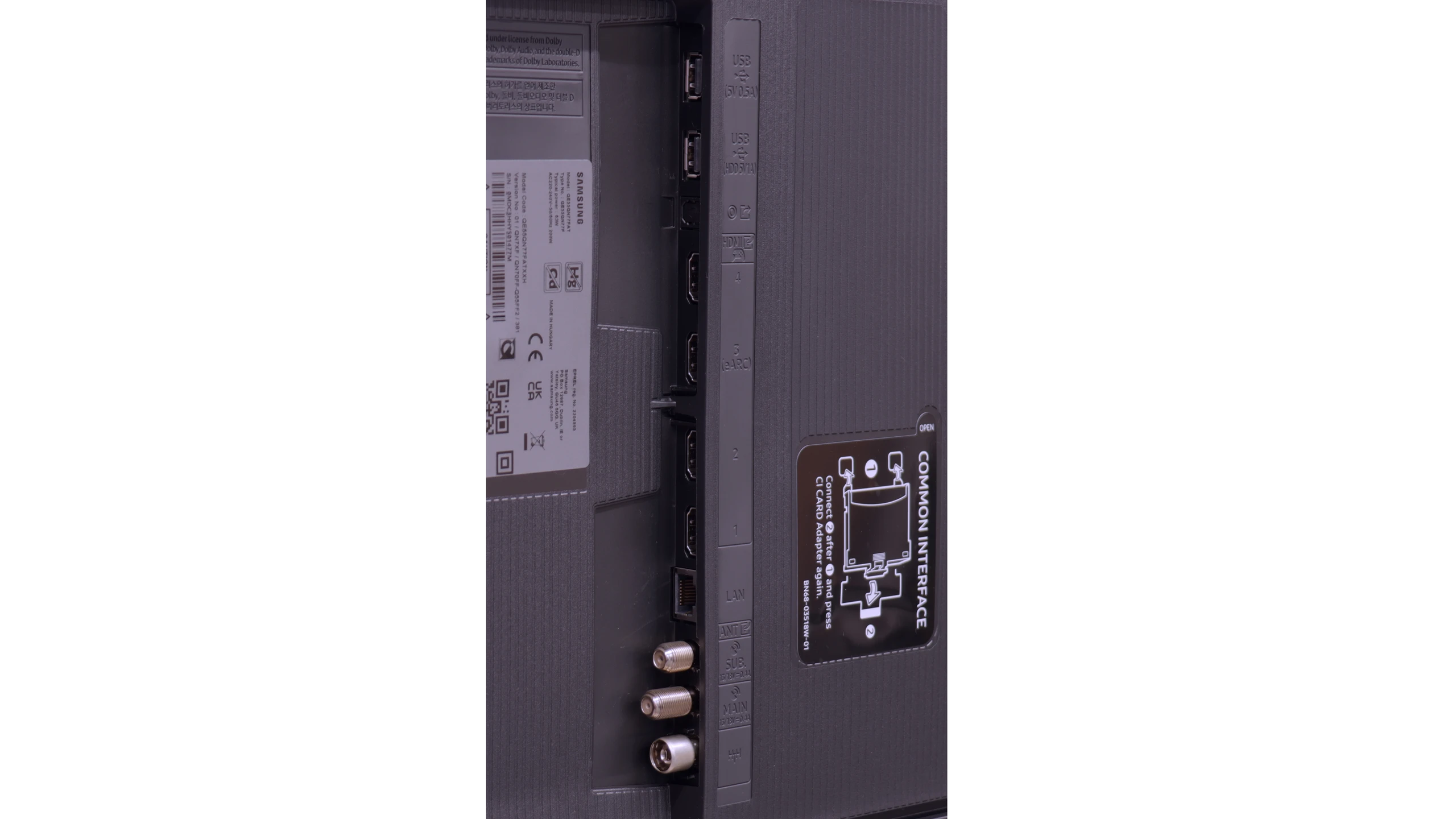
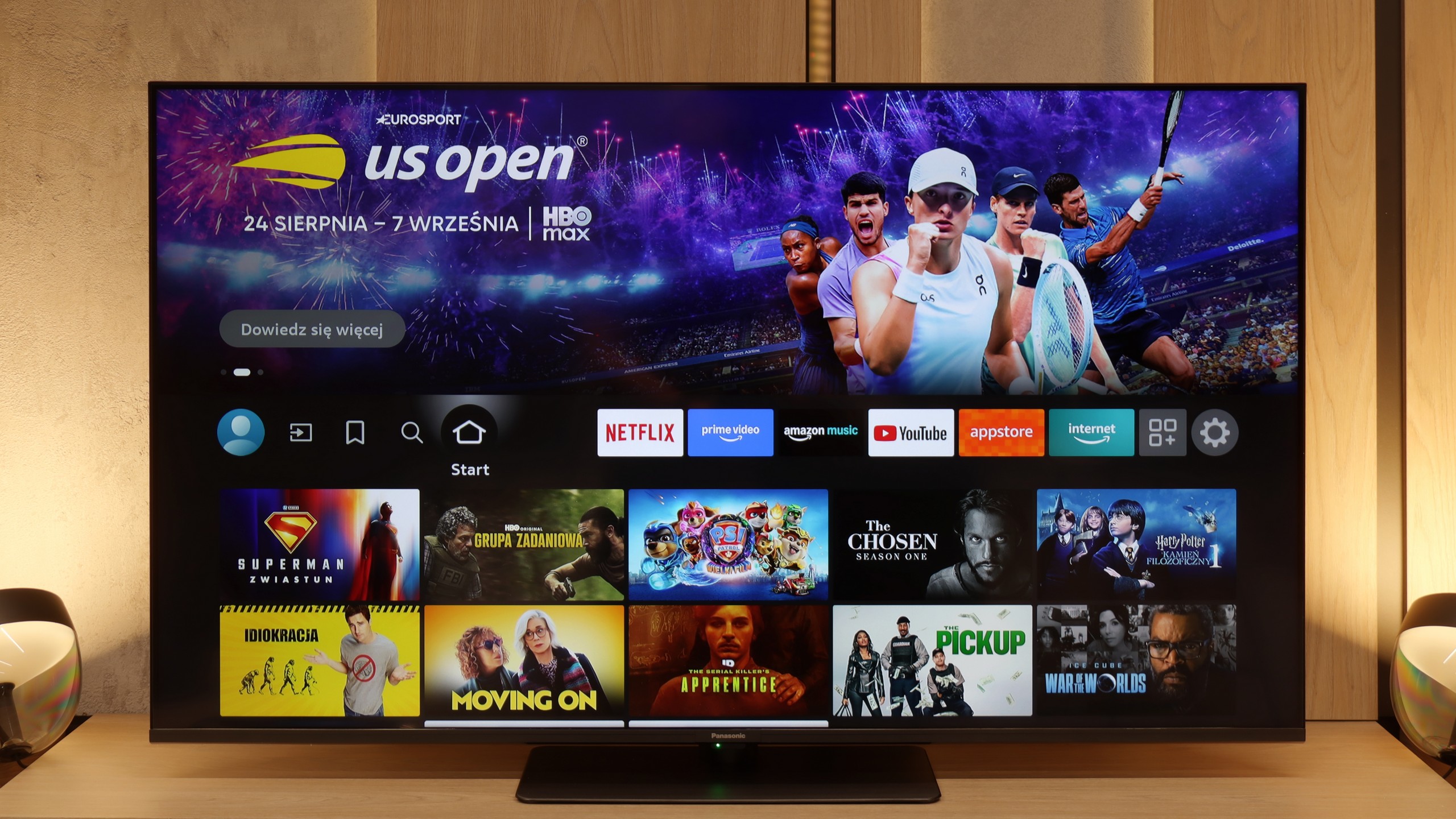
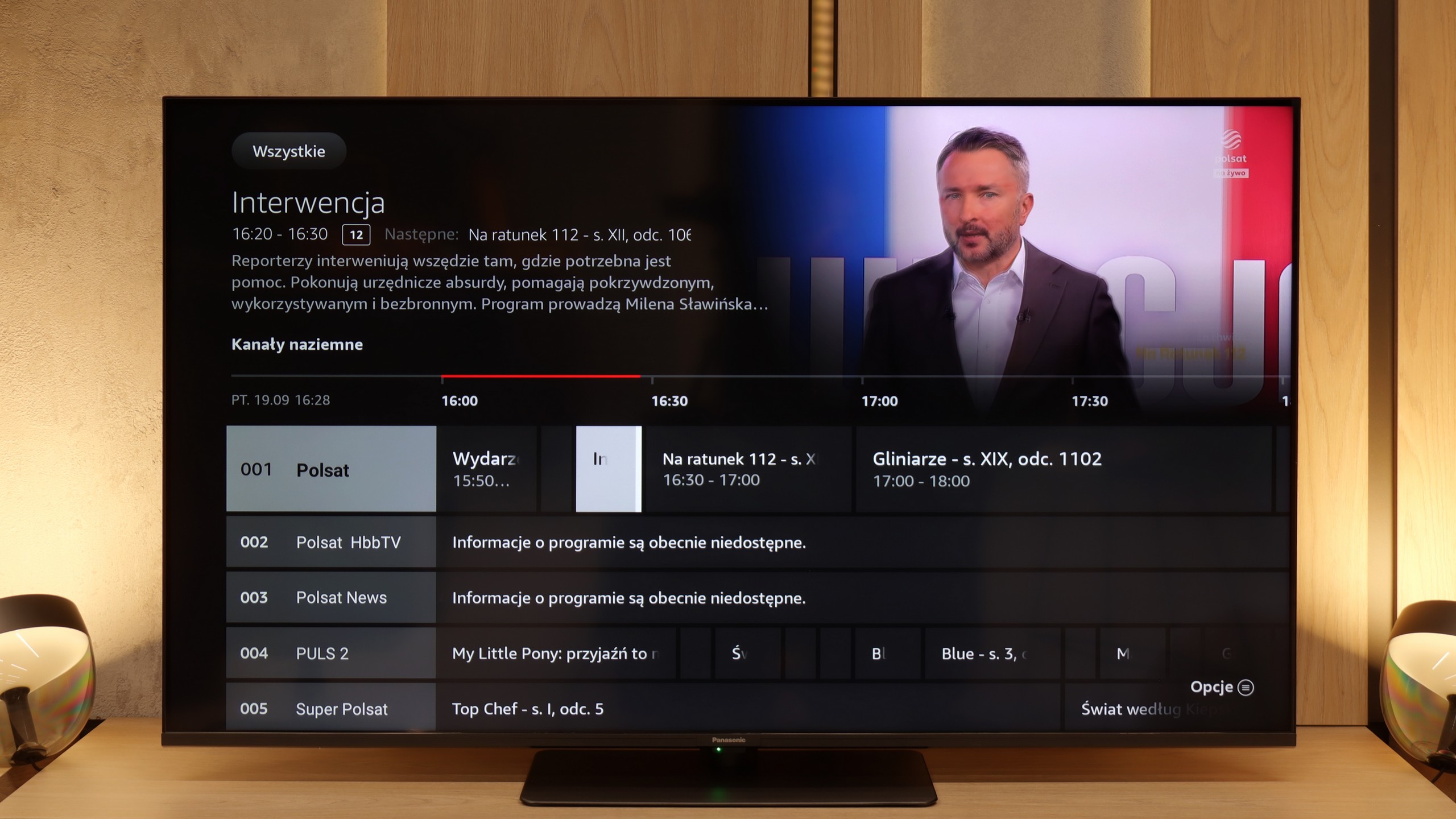
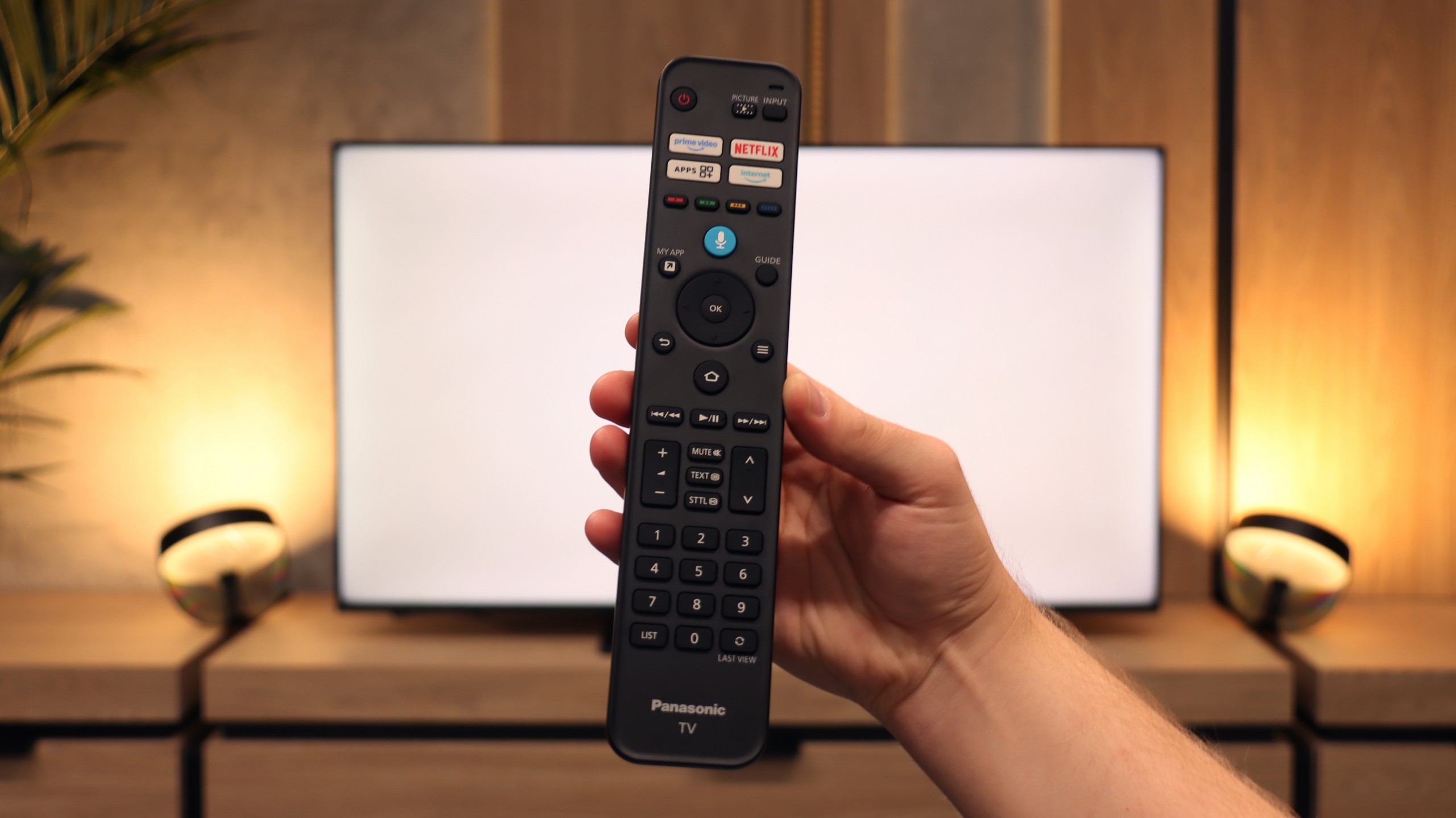
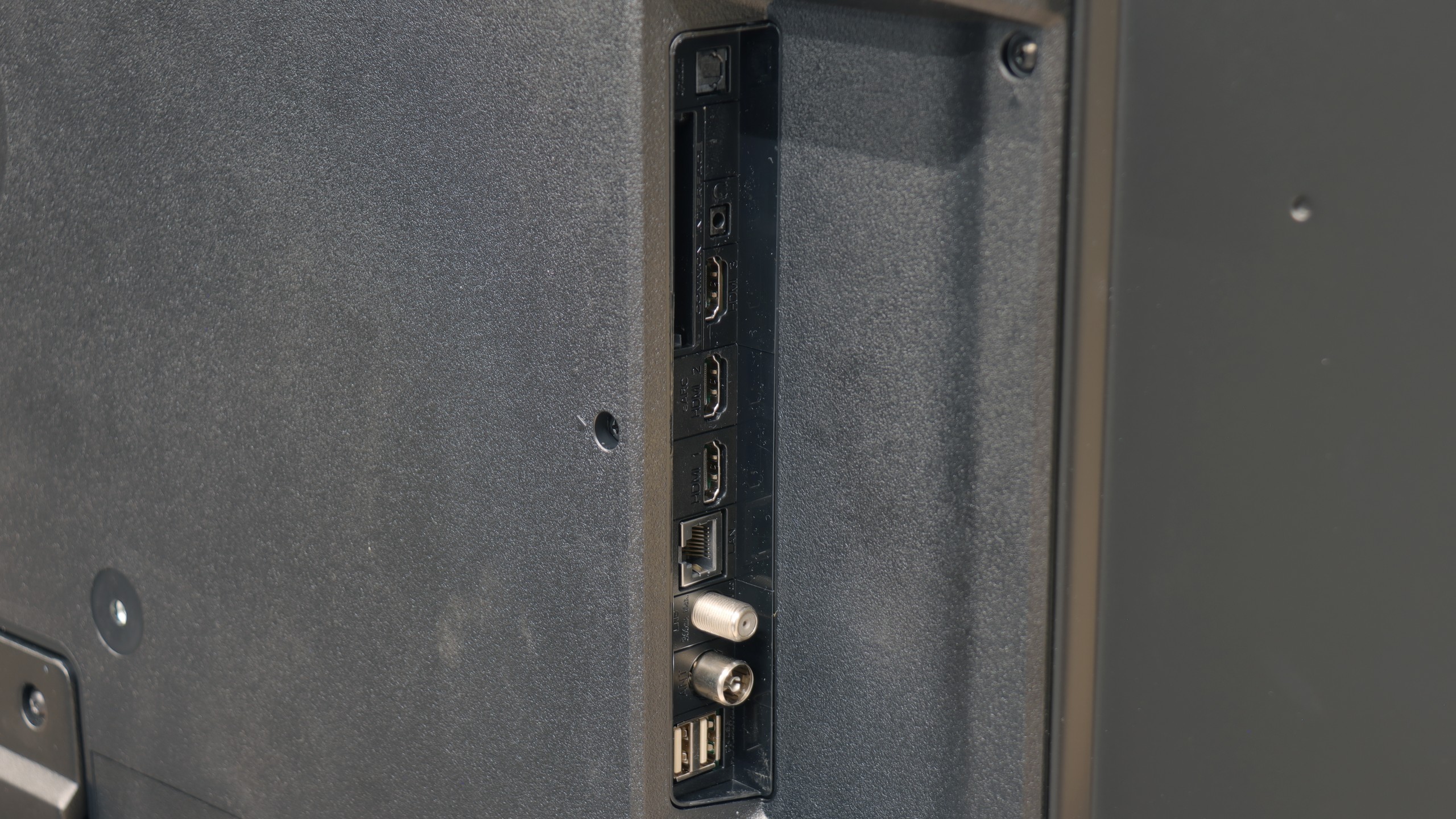
Television Features
The QN70F doesn't forget classic features that still matter to many users. On board, we find, among other things, picture-in-picture (PiP) mode, enabled by the presence of two tuners, teletext, and a "Sound Only" mode – perfect if we want to use the television like a radio. We can easily pair it with headphones or a soundbar via Bluetooth, and the remote control – despite the absence of a numeric keypad – works reliably, allowing us to operate other devices and additionally does not require us to aim at the screen. However, it should be noted that like all new Samsung models, we will not find USB recording functionality here. This is a system limitation that the brand clearly adheres to consistently.
Smart TV QN70F – Tizen
The Tizen system, developed by Samsung for years, is one of the most refined Smart TV interfaces. It is fast, intuitive, and feature-rich. The QN70F supports voice search (also in Polish), wireless screen mirroring from a phone (both via AirPlay and Miracast), as well as integration with watches and other devices in the Samsung ecosystem. All of this is connected by the SmartThings app, which allows you to control hardware, automate tasks, and connect devices in one network. (Not only Samsung brand devices). However, it is not perfect. Tizen is a closed system, so the selection of apps can be somewhat limited – especially in comparison to Google TV. All the major streaming services are in place, but if you use less popular services, it's worth checking before purchasing if they are available in the Samsung store.
SmartTV: FireTV
The W85B runs on the Fire TV system, and it must be said – it is a significant step forward compared to Panasonic's previous proprietary solutions. Here, we have support for AirPlay, screen mirroring, and even voice control through Alexa. It sounds modern, and in practice, it does provide a lot of capabilities. The problem is that in Europe, Fire TV still looks a bit like a “guest with luggage.” It works decently, but there are occasional micro-hiccups, the interface doesn't always respond as smoothly as we would like, and in the menu, one can encounter awkward translations. This is not yet at the level of the big players like Google TV or even Tizen, but it is still an improvement compared to what Panasonic had previously. The worst part, however, is that the Fire TV application library is quite modest, and this is its biggest drawback.
Classic Television Functions
In terms of typical television functionalities, it is quite good – we have a classic remote control with a full numeric keypad, a clear EPG guide, and the possibility to record programmes from the built-in tuner to an external USB drive (e.g. a flash drive). The downside is the lack of the option to schedule recordings in advance – you can only record “here and now,” but not set recordings for later.
Playing files from USB
9/10
3.1/10
Supported photo formats:
Maximum photo resolution:
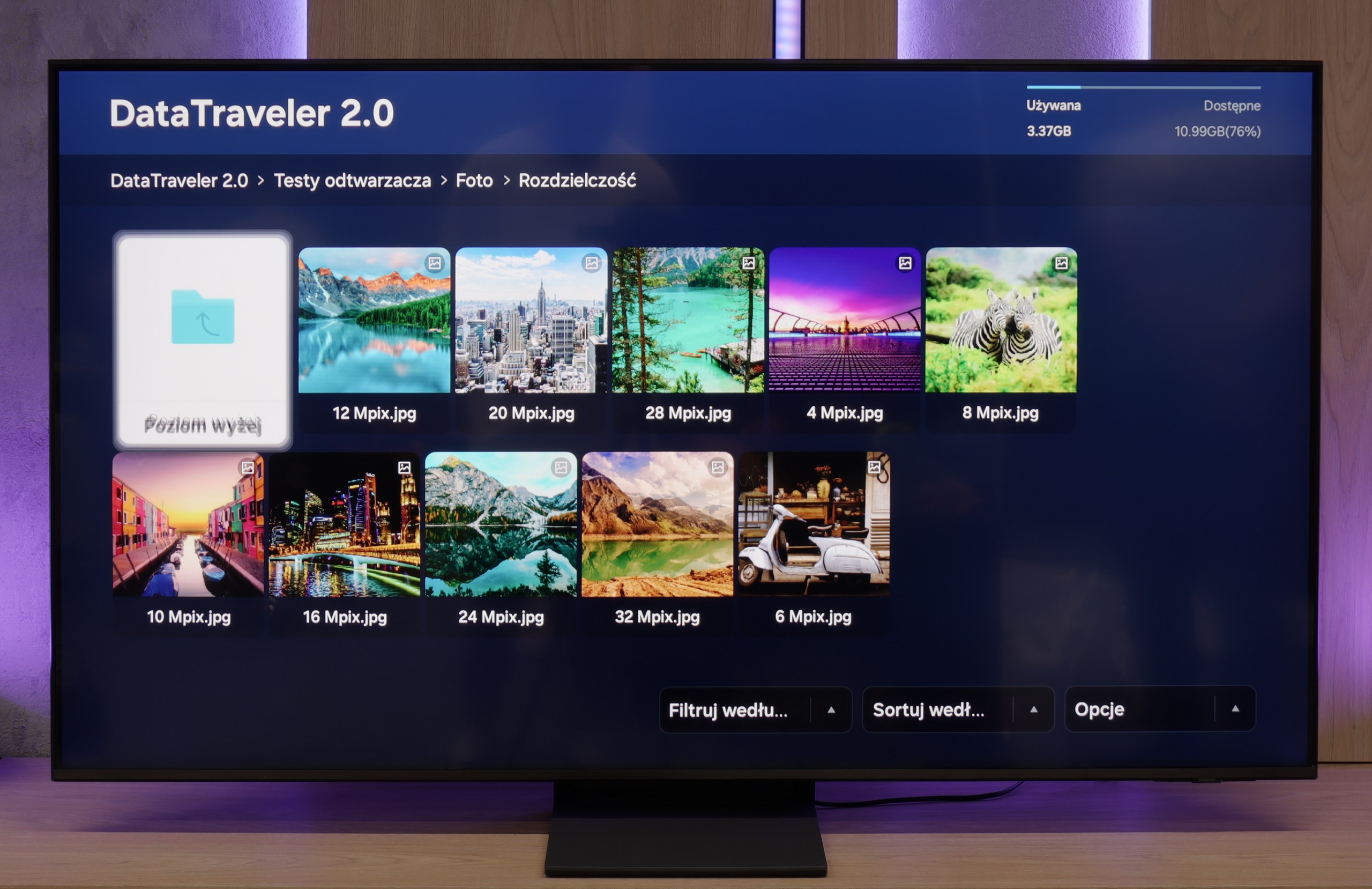
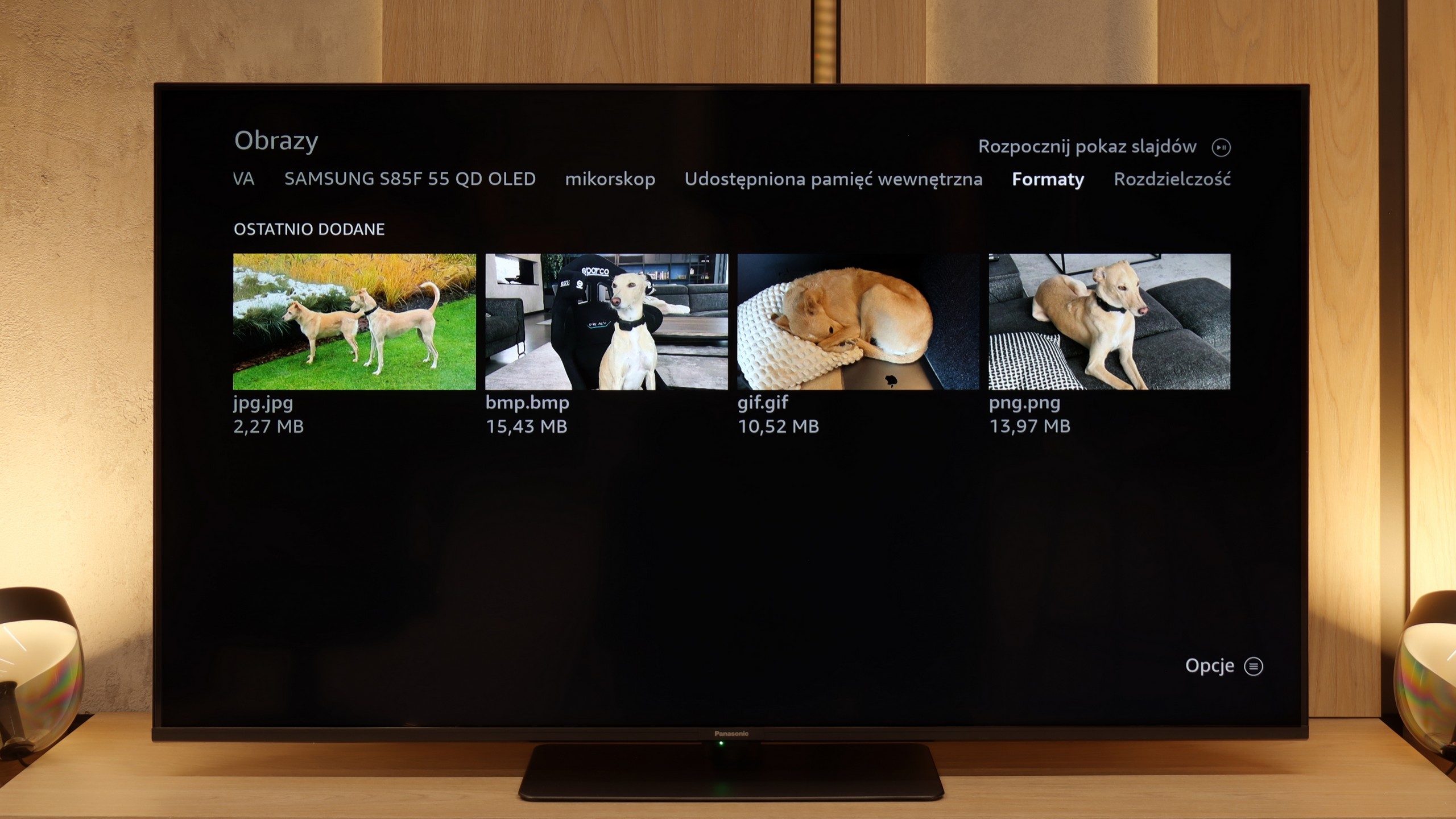
Samsung QN70F performs well with media playback – it easily runs photos, music, and videos in the most commonly used formats. During tests, it effortlessly opened JPG files, MP4, and subtitles in TXT format, so for most people, this will simply be sufficient. However, there were instances where a few files – despite having the correct extensions – would not play. It may be an issue with a specific version of the system, and the problem might disappear after future updates.
The biggest downside of the built-in player with Fire TV is the lack of support for external text subtitles. If you have your own film library and use text files, you simply won't be able to display them on this television. The player itself handles basic video formats, but if someone wants to fully utilise files from USB, they will likely end up installing an additional application from the store (e.g. VLC).
Apps
8.7/10
7.6/10














































Sound
6.4/10
5.8/10
- Maximum volume84dB87dB
- Dolby Digital Plus 7.1
- Dolby True HD 7.1
- Dolby Atmos in Dolby Digital Plus (JOC)
- Dolby Atmos in Dolby True HD
- DTS:X in DTS-HD MA
- DTS-HD Master Audio
The Samsung QN70F performs quite mediocrely in terms of sound, which shouldn't come as a surprise considering the exceptionally slim design of the television. The built-in speakers will manage perfectly well during everyday viewing of news or simpler content, but it's hard to talk about any depth or spaciousness of sound here. It's simply a compromise one has to accept when choosing an elegant and thin design over a bulkier casing with a better audio system.
Here, the Panasonic W85B unfortunately has nothing to boast about. The speakers sound flat and rather “plastic”, so there’s definitely no talk of cinema experiences here. There’s no depth, there’s no clear bass – just basic sound that’s merely meant to “exist”. It’s a shame because we thought that the external subwoofer used here would actually make a difference. Unfortunately, we were mistaken. The only advantage is that the television can play really loudly. This may appeal to older users who often need higher volumes to comfortably watch programmes or news. It’s sufficient for everyday TV watching, but if someone is thinking about films and games – an additional soundbar or audio system is practically a must.
Sound Quality Test
Acoustic Measurements
84dBC (Max)
75dBC
87dBC (Max)
75dBC
